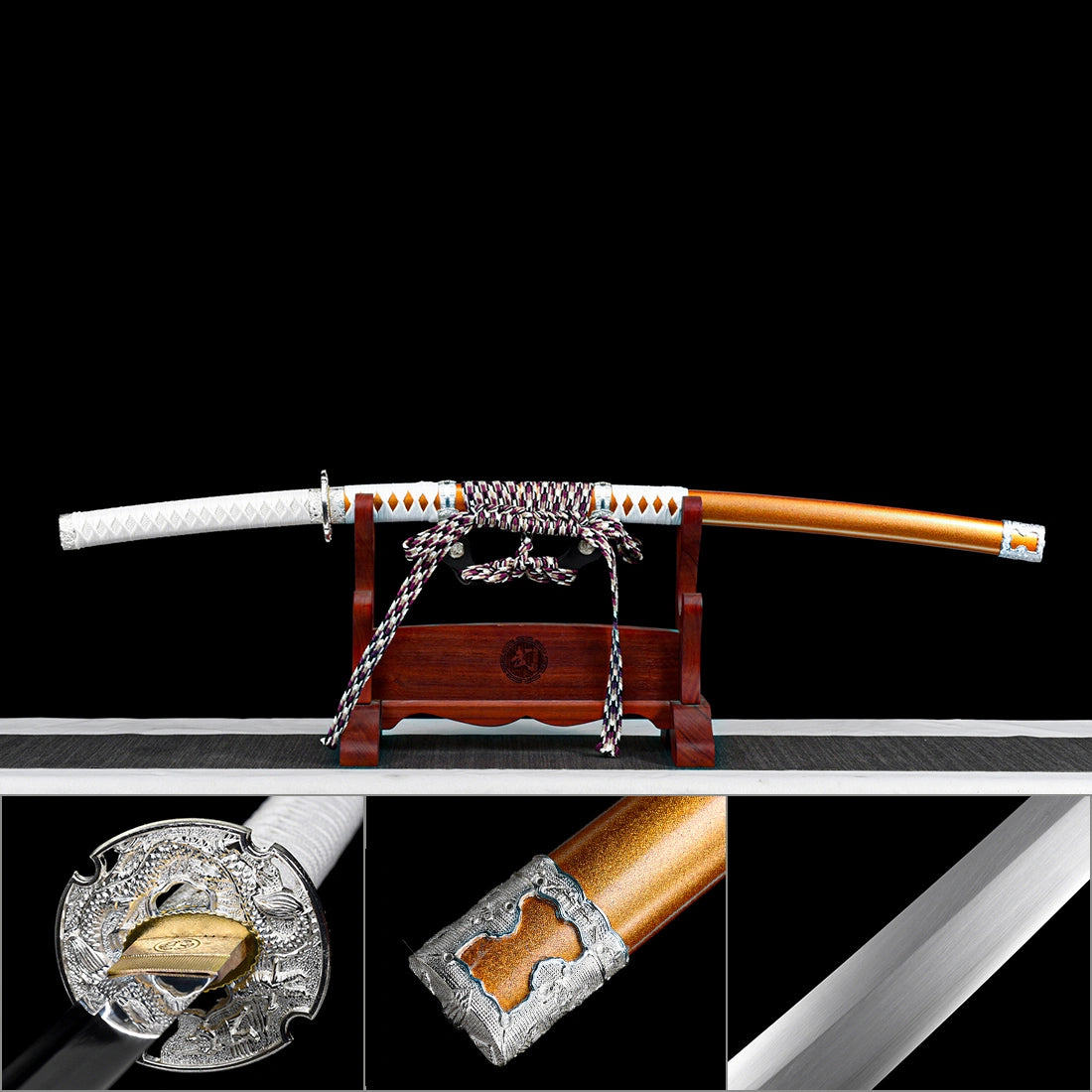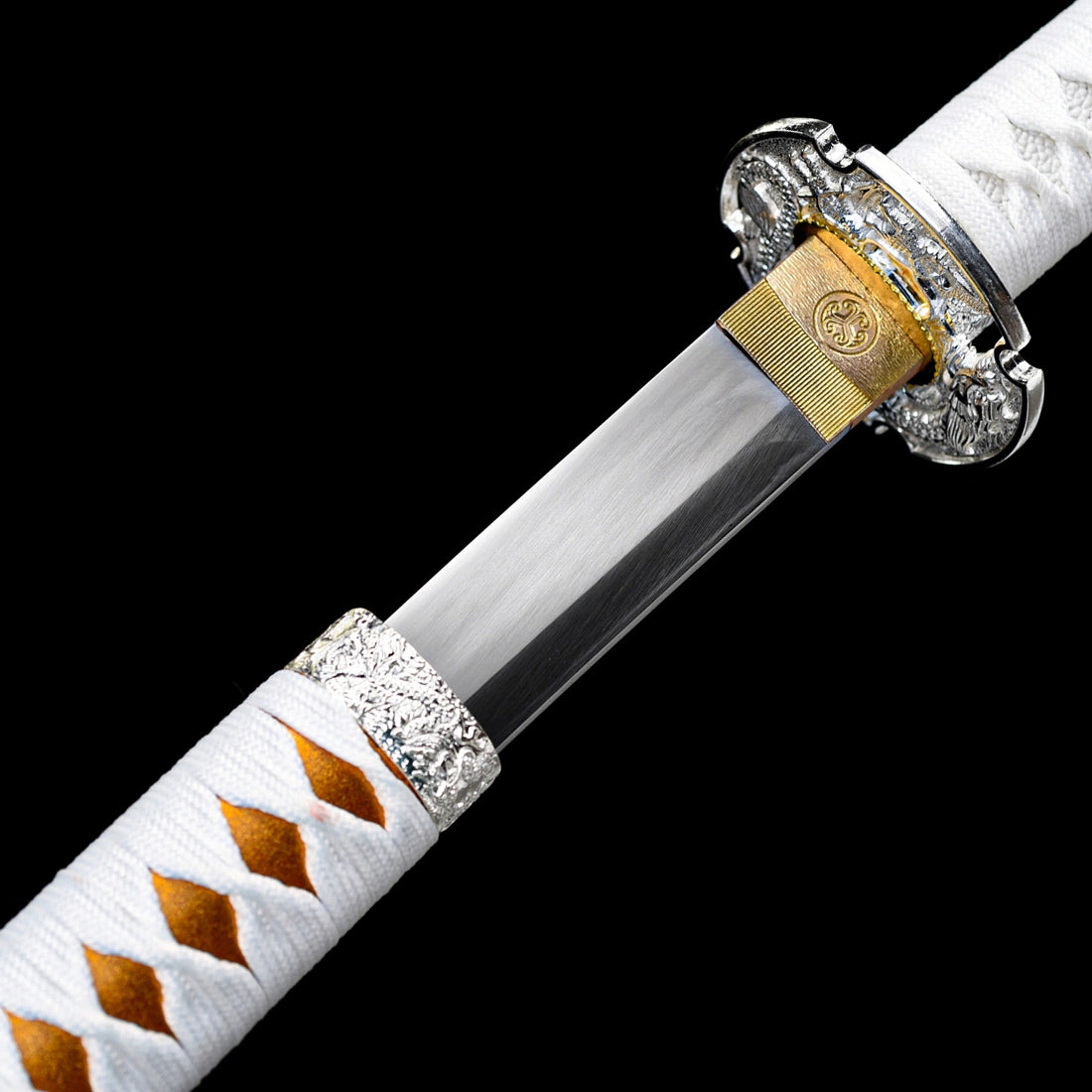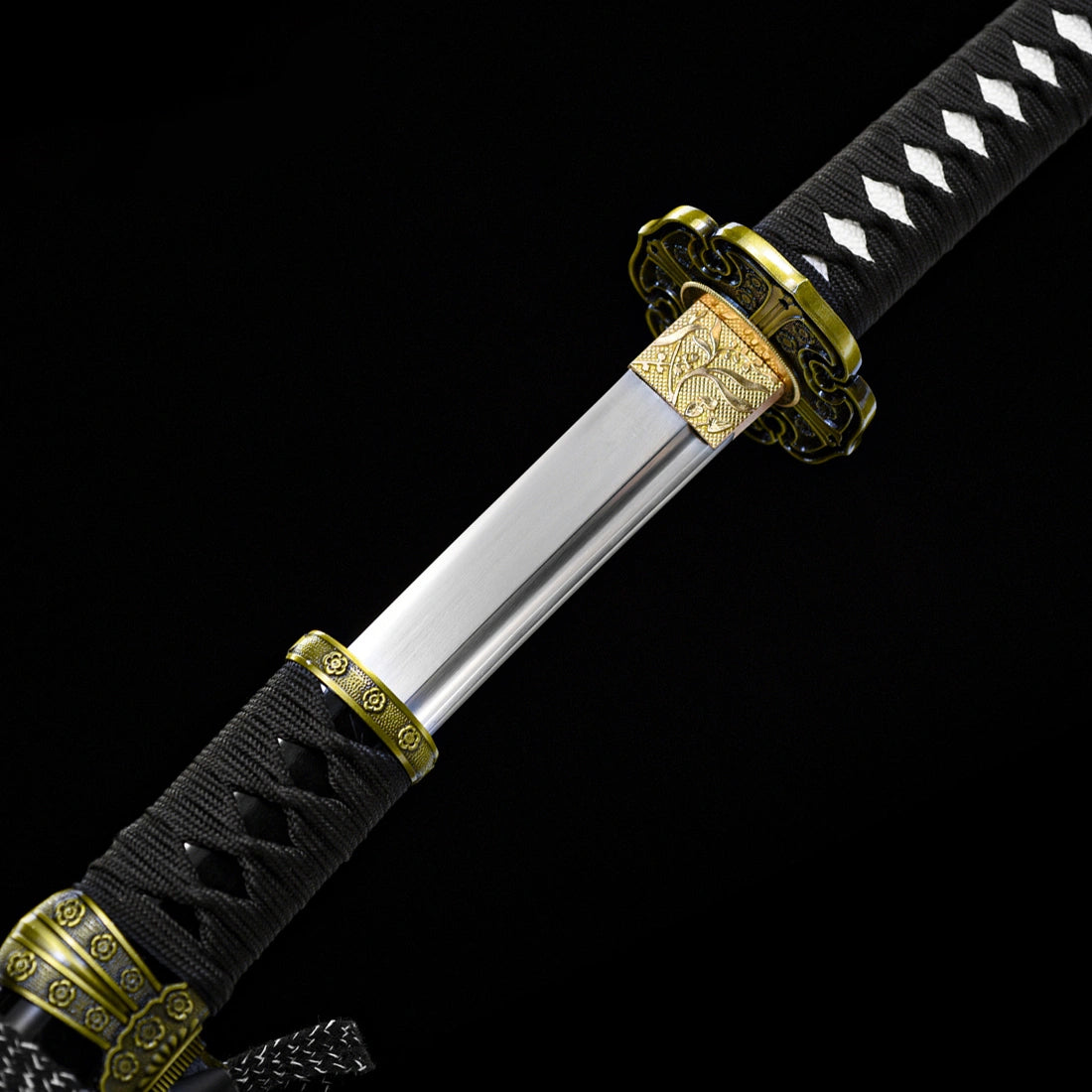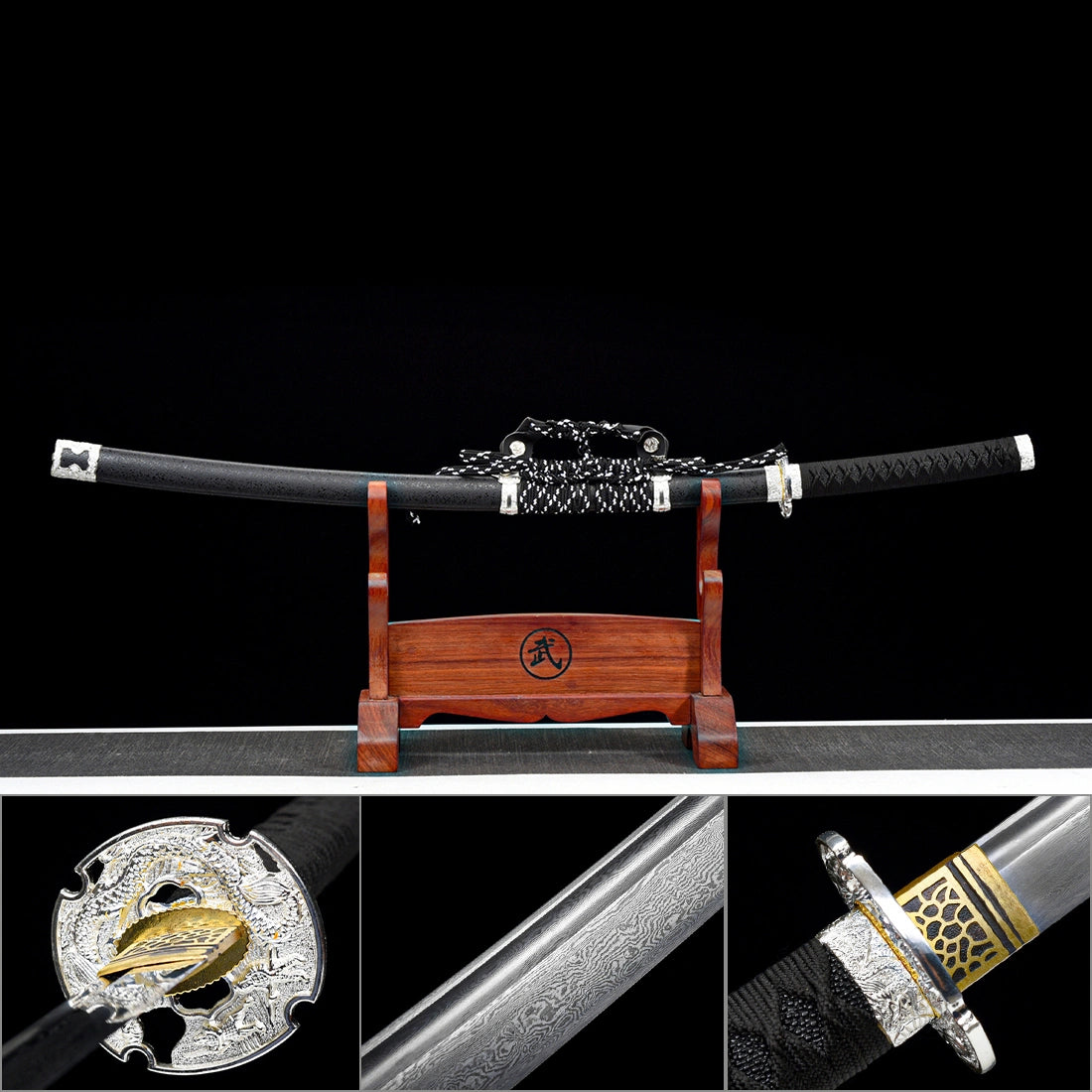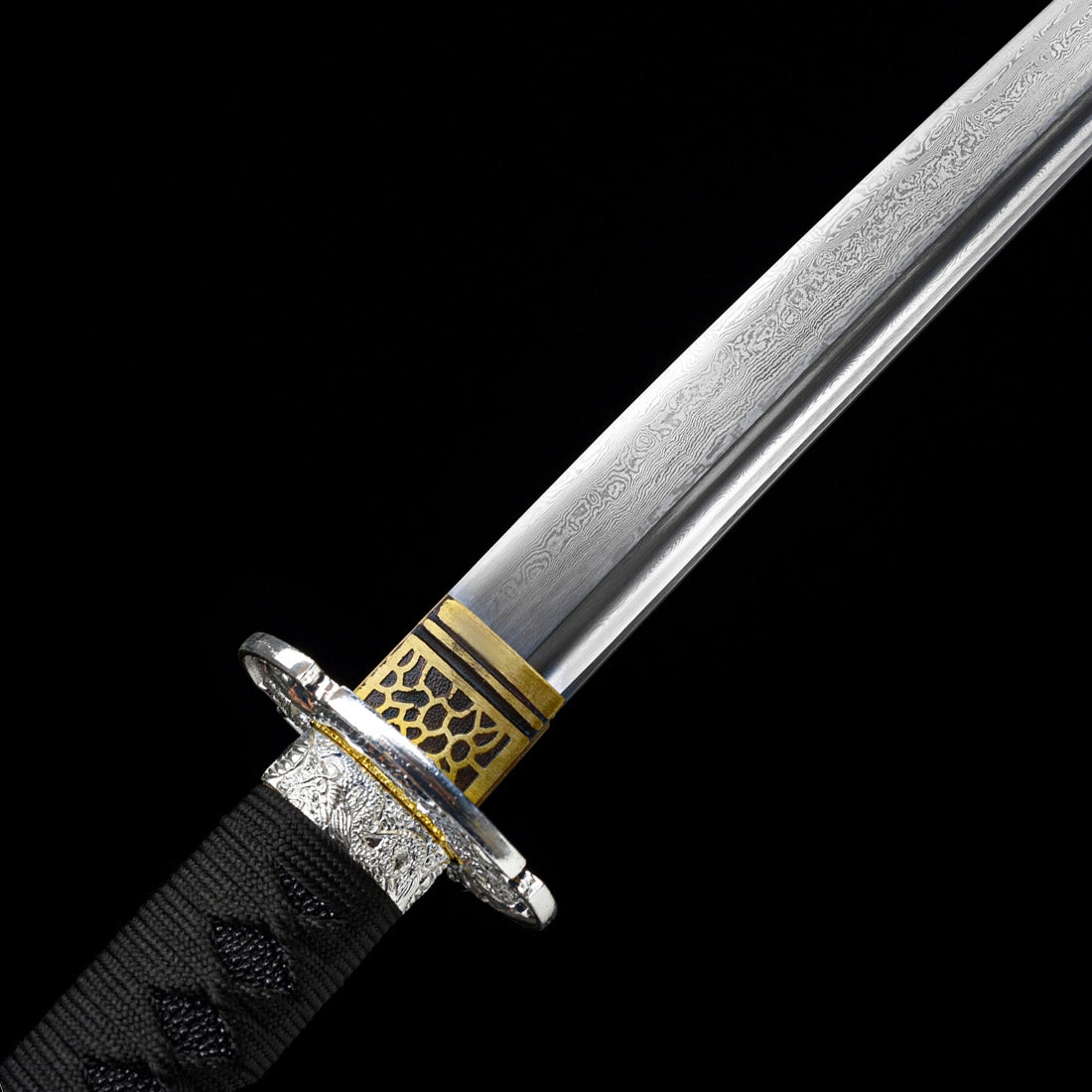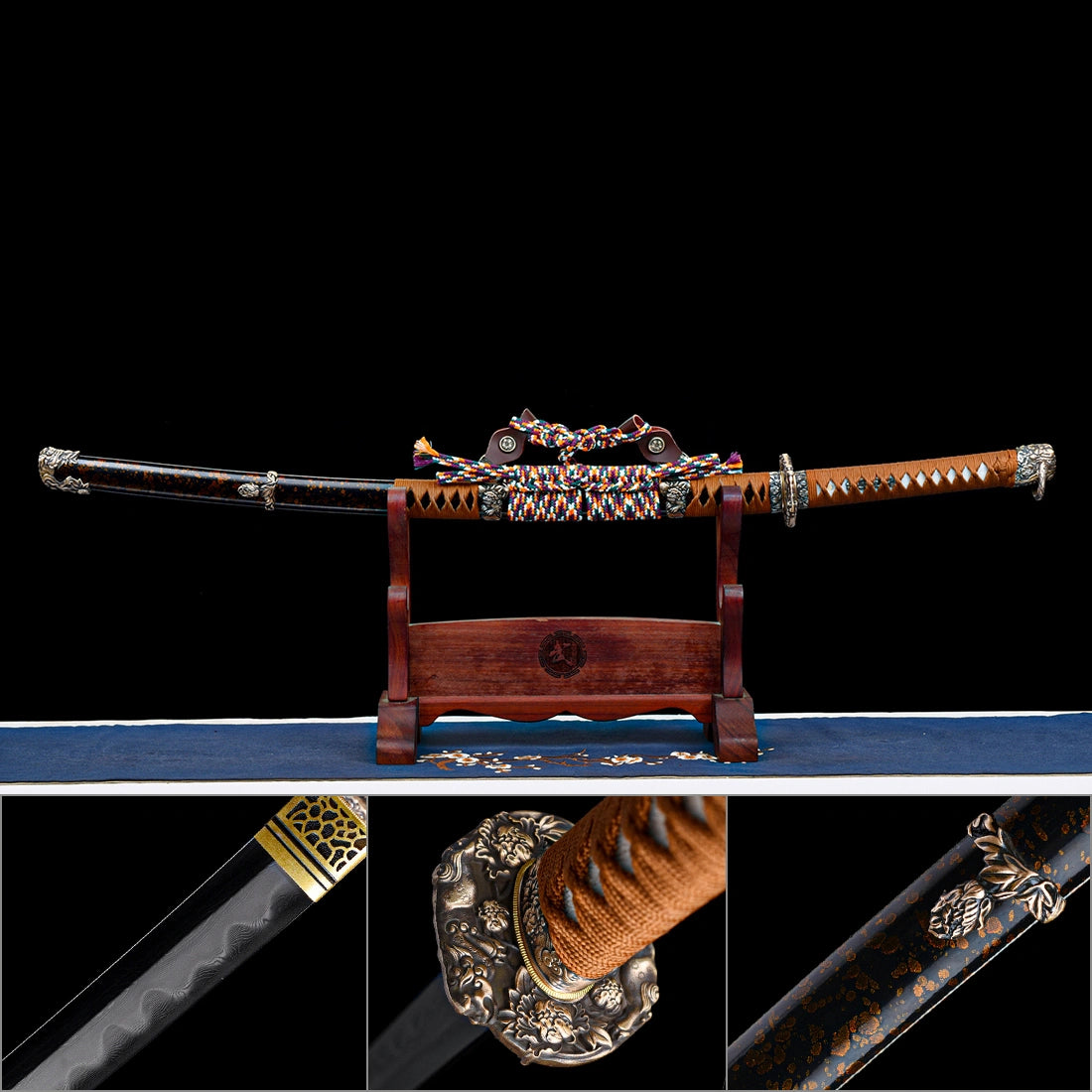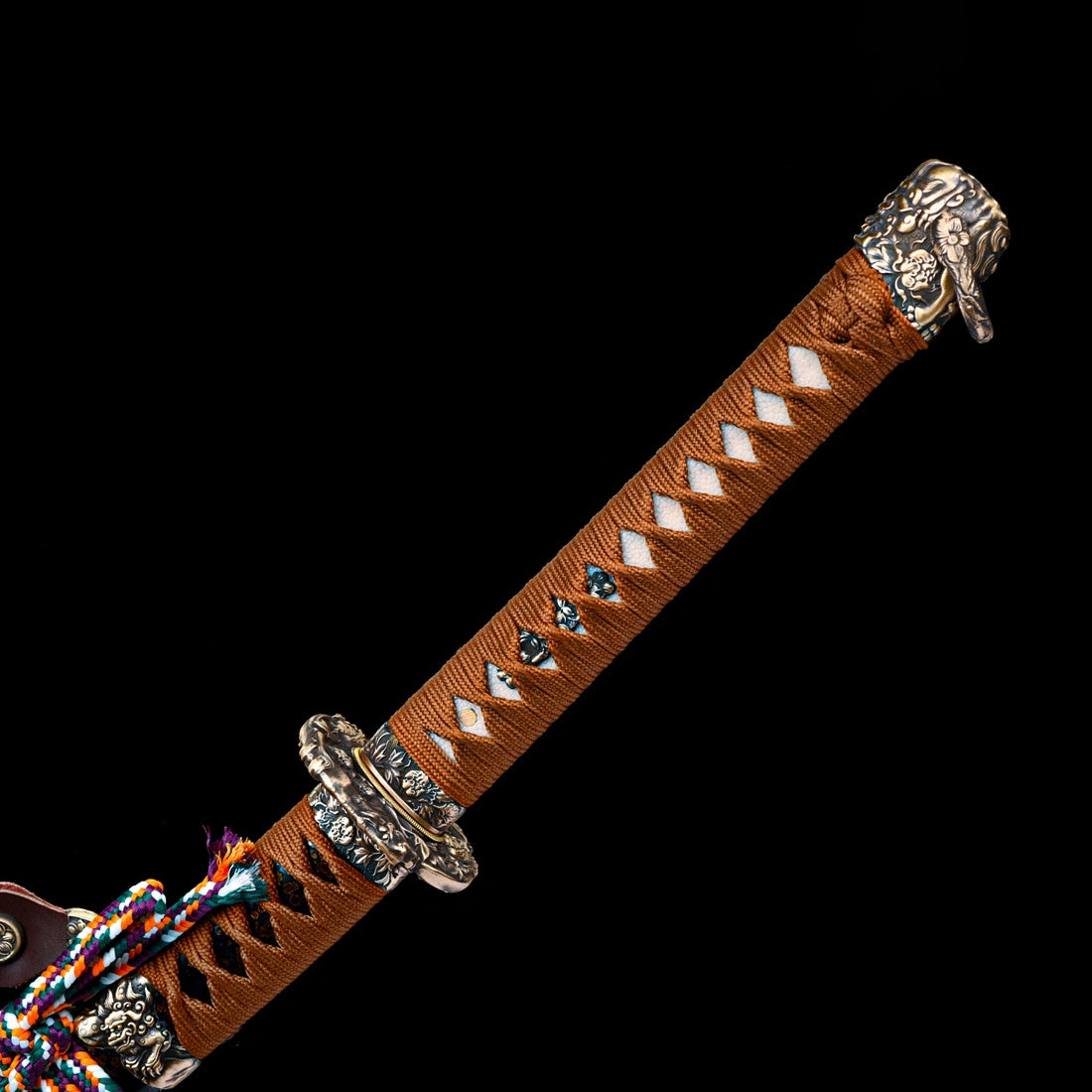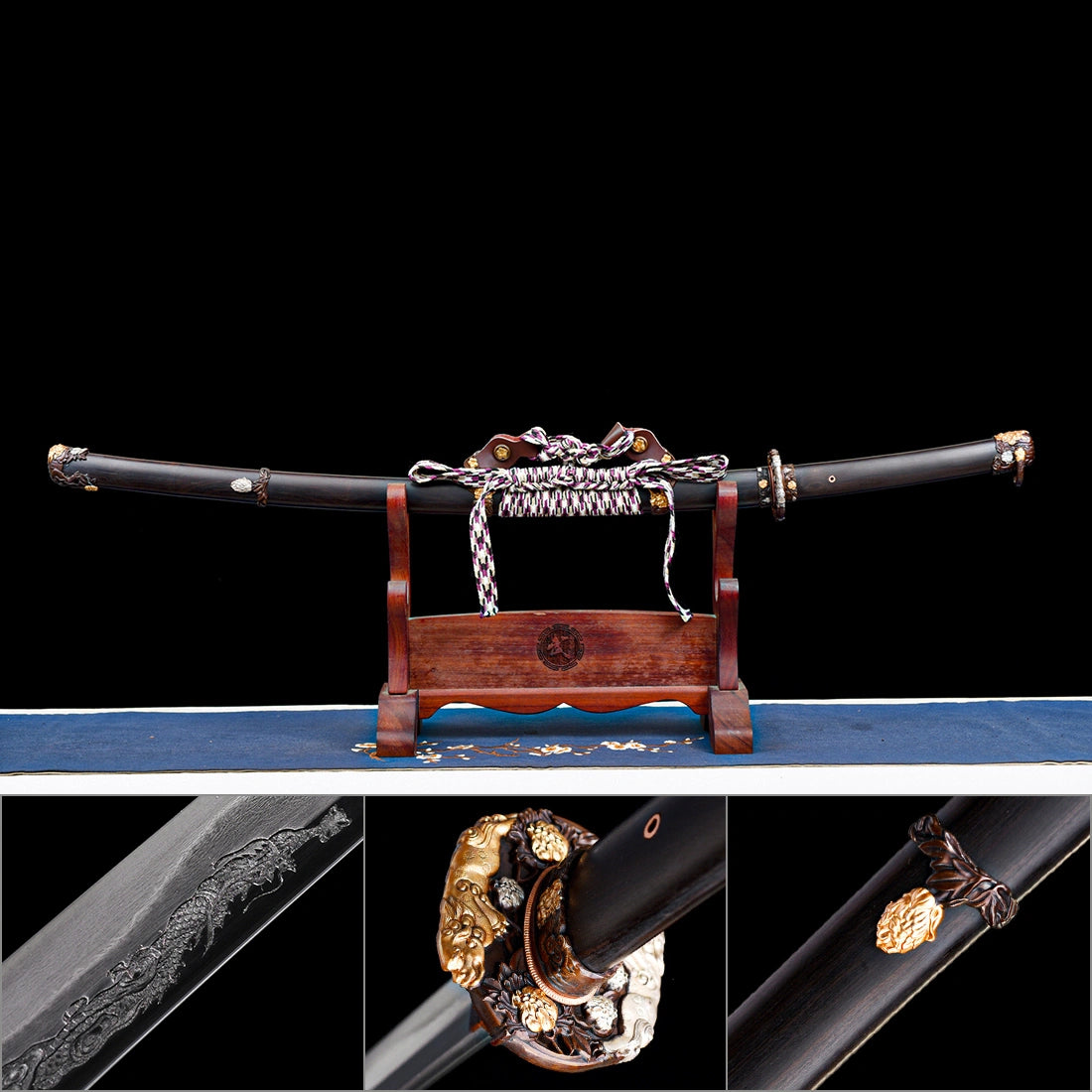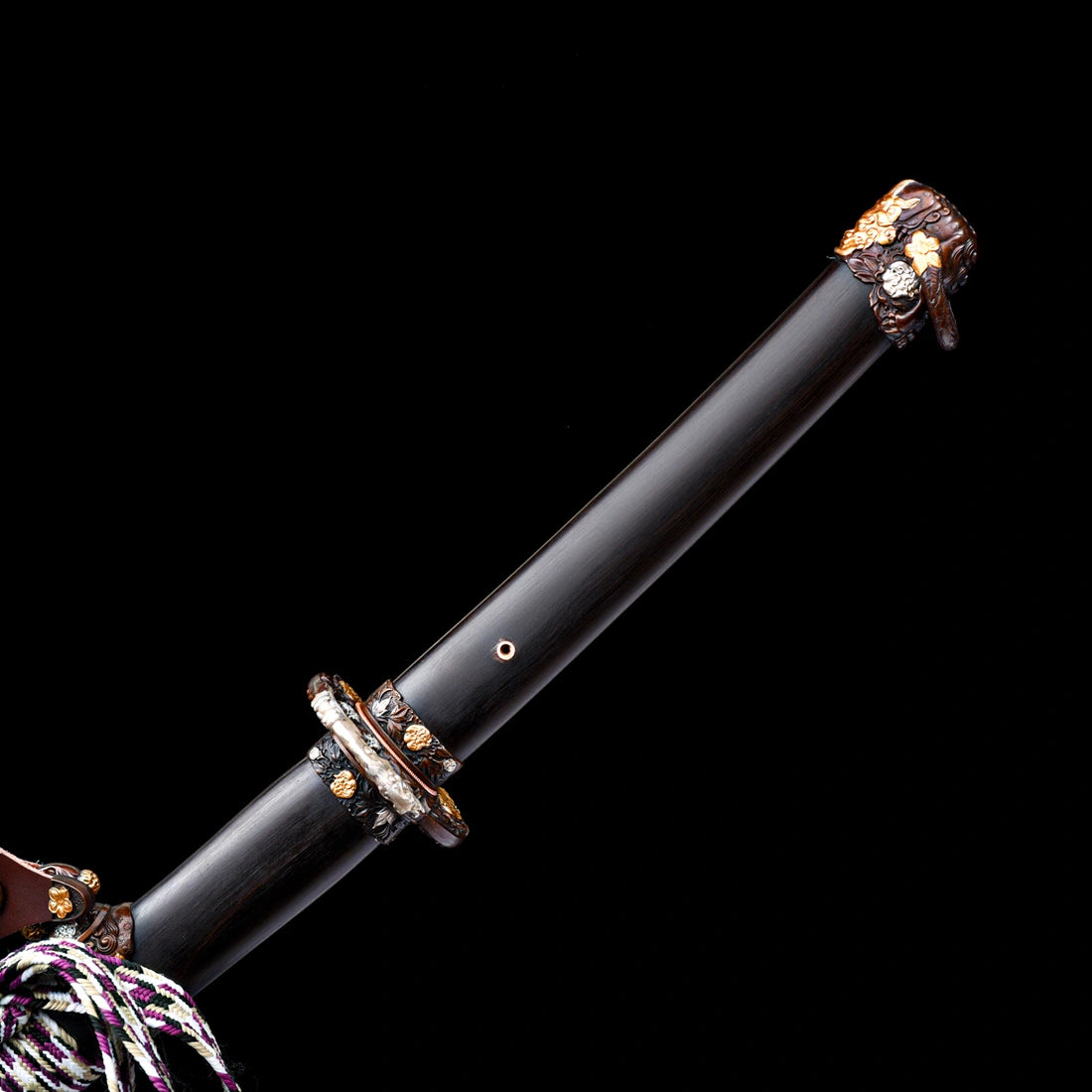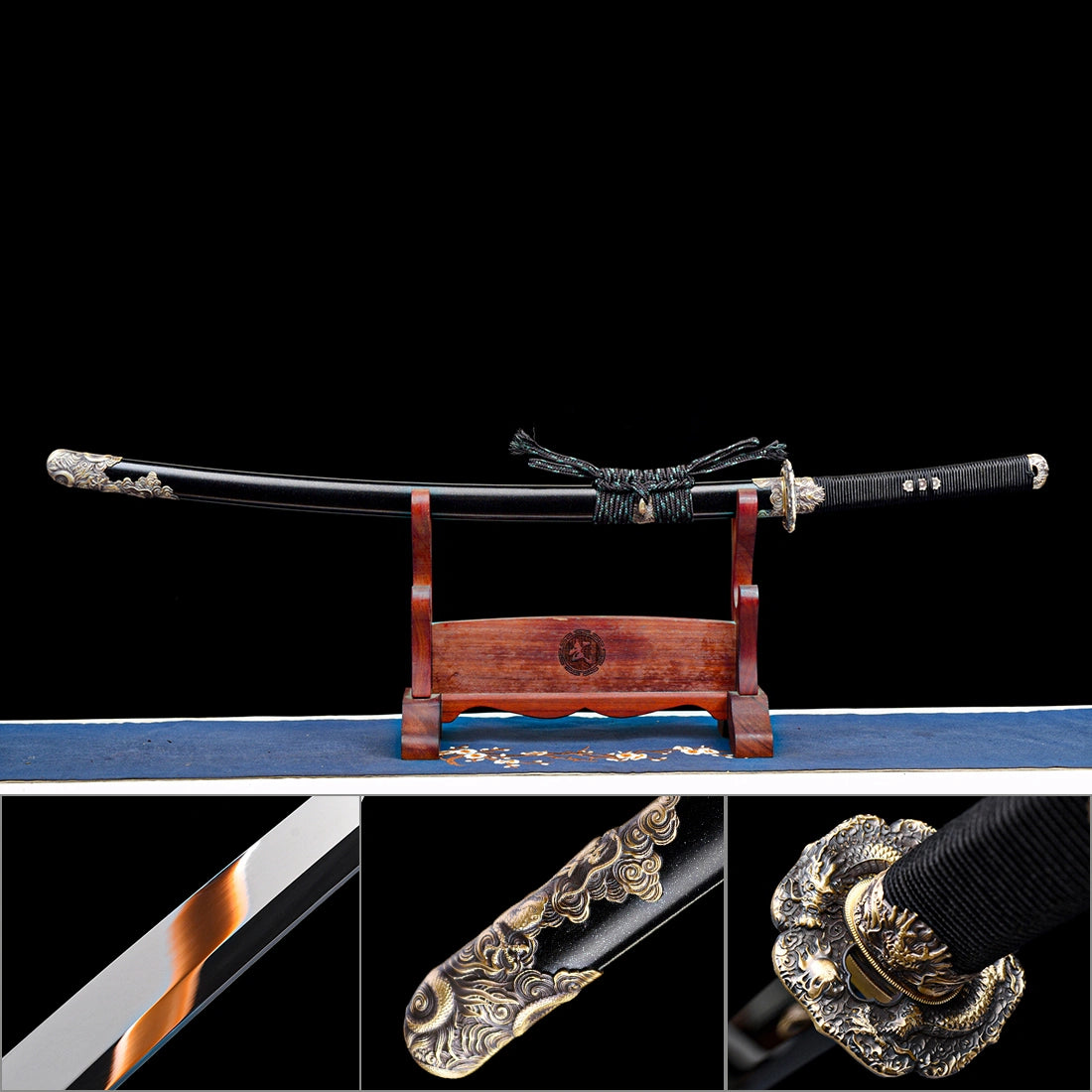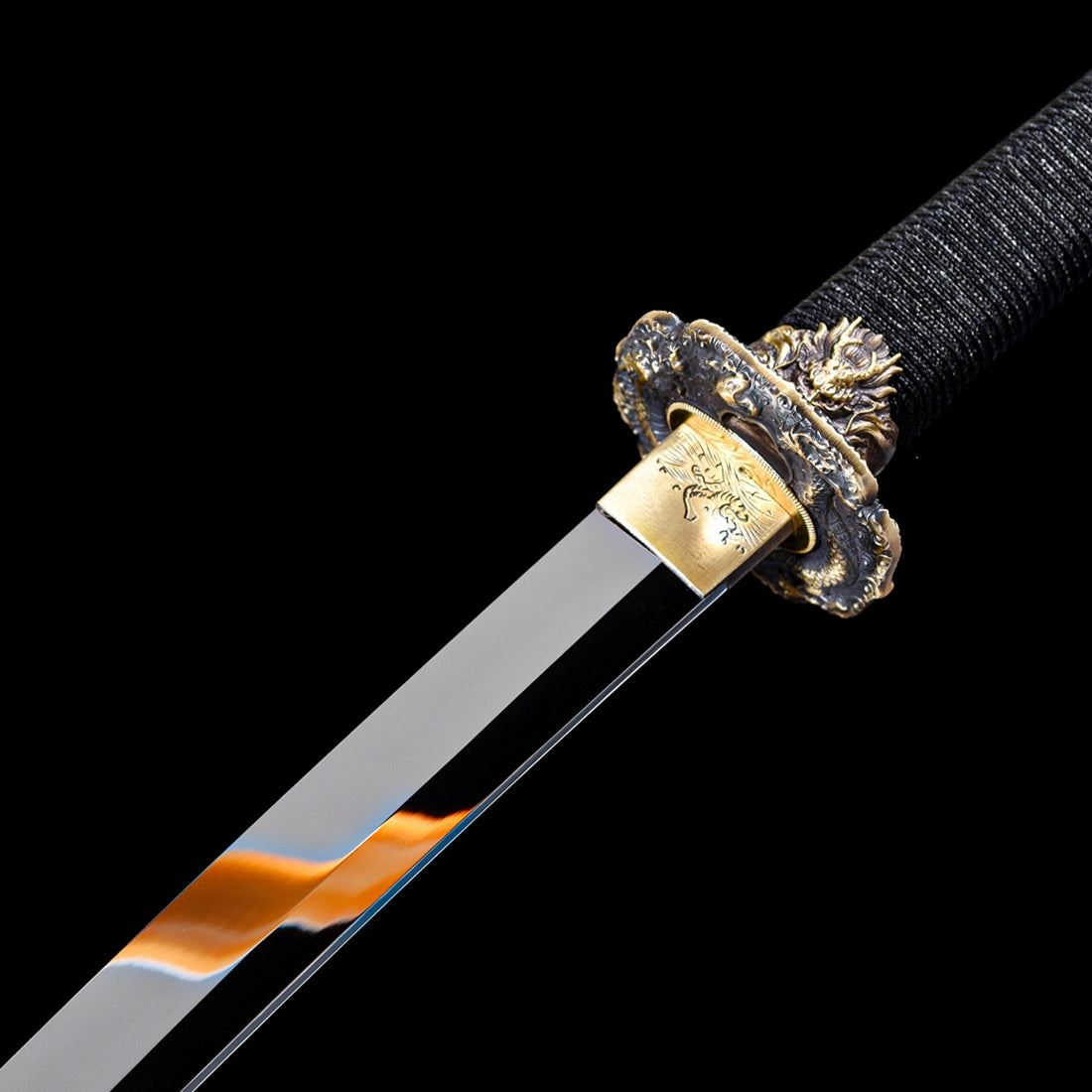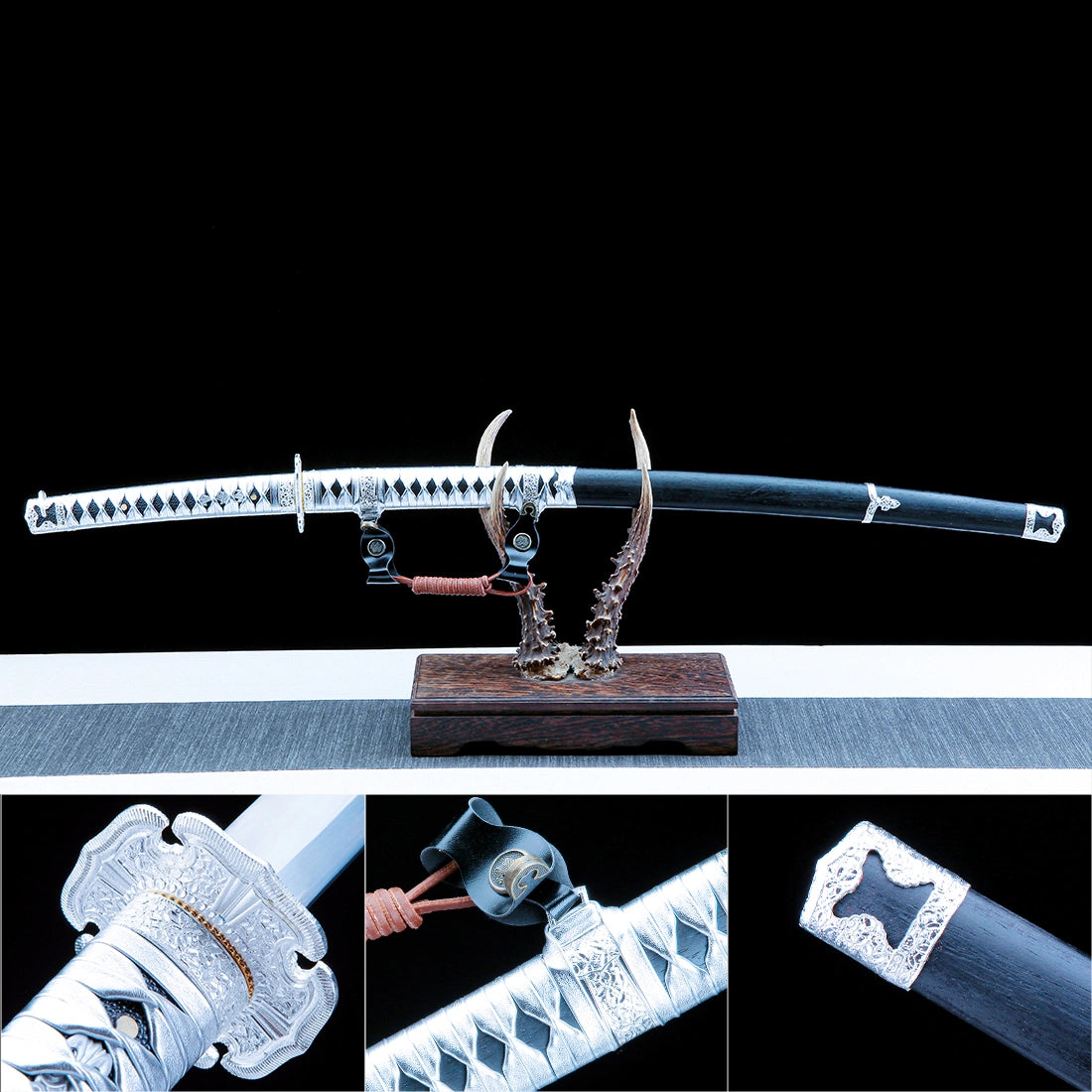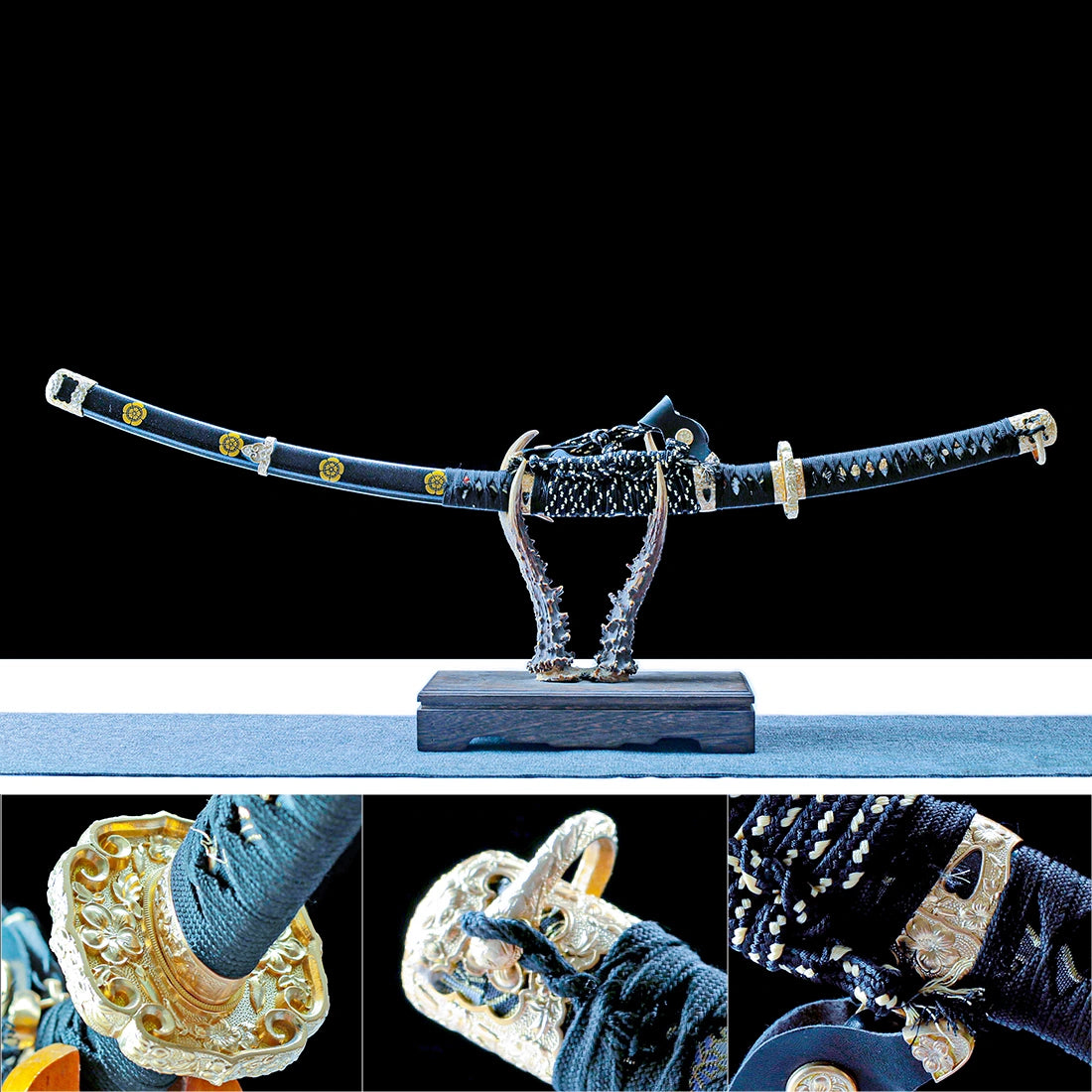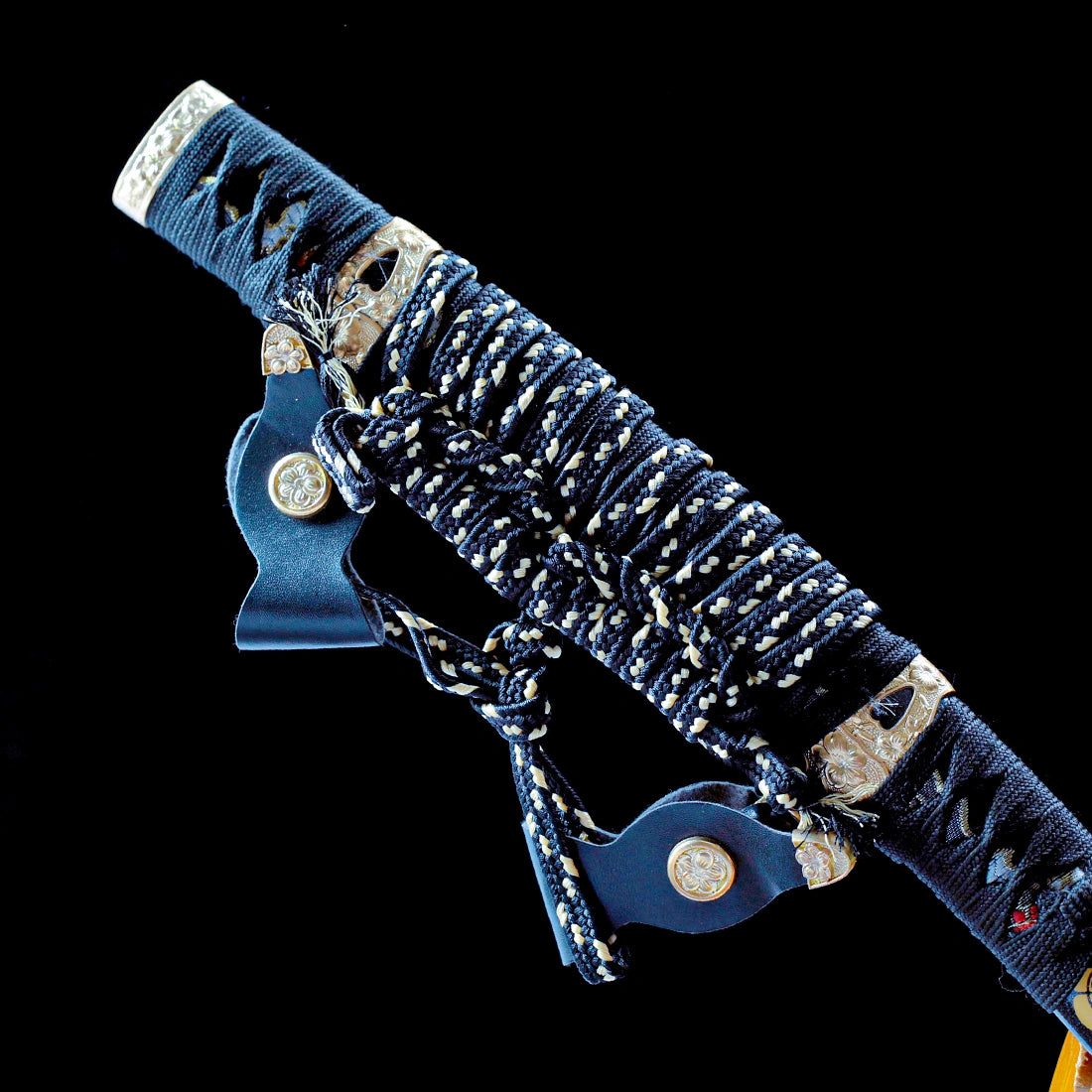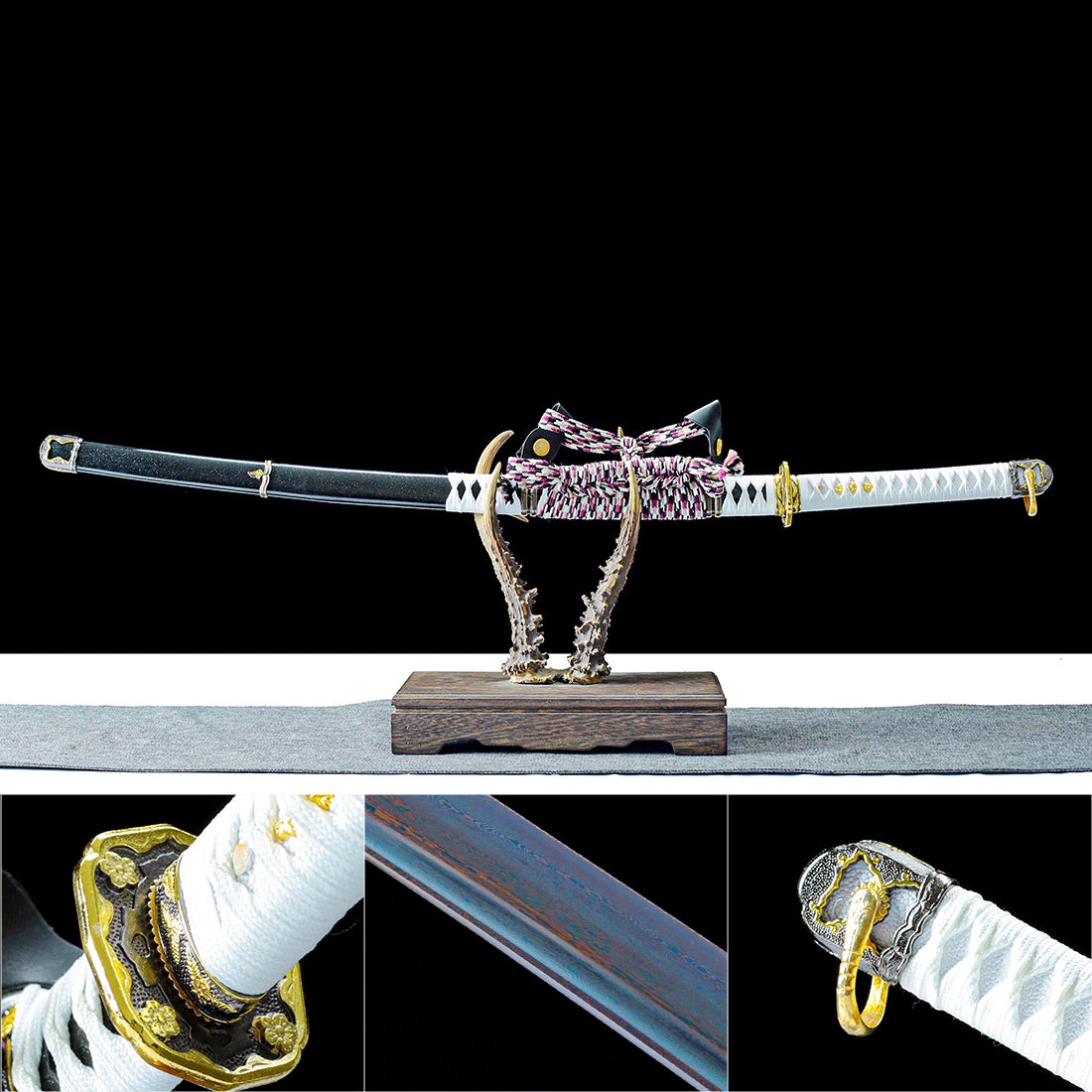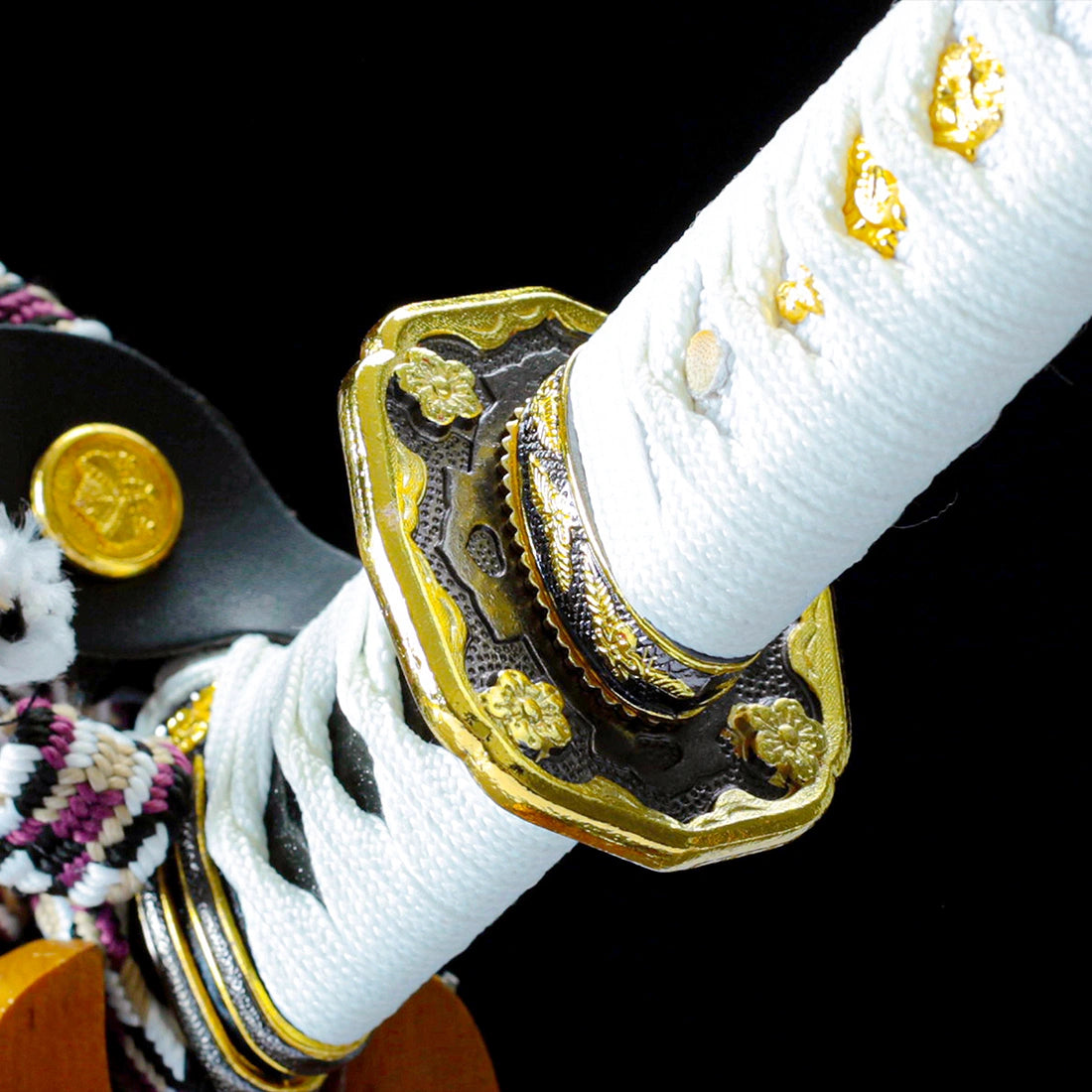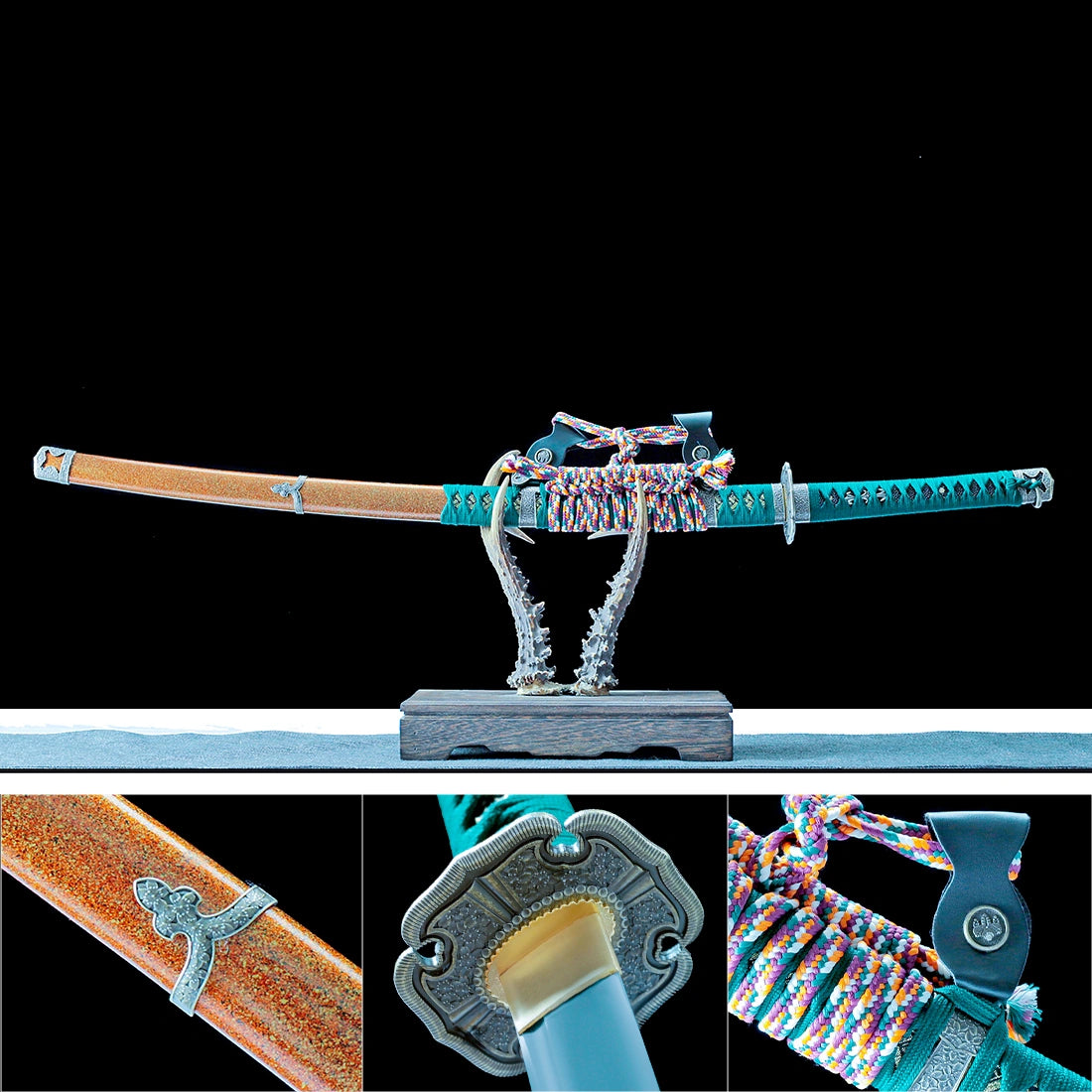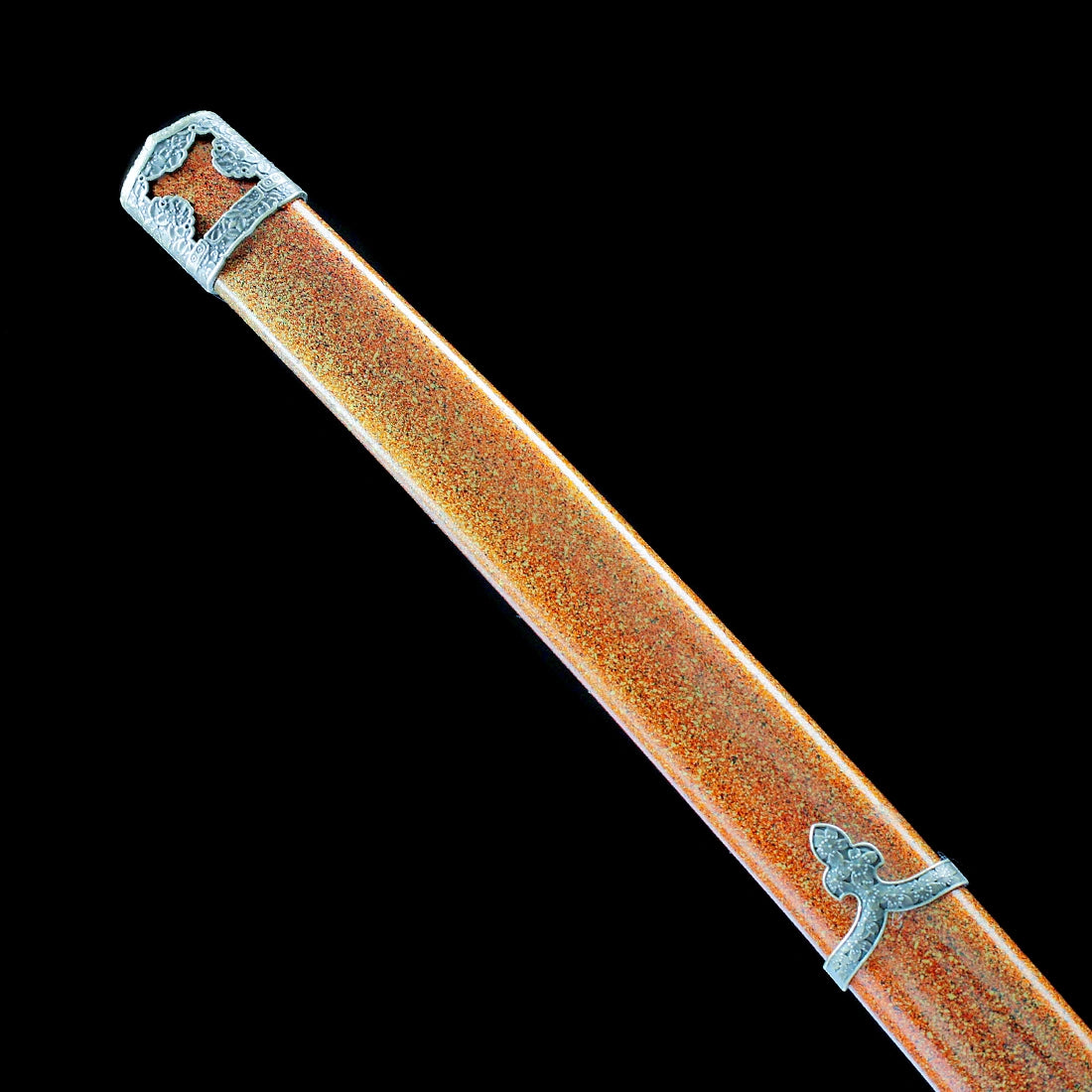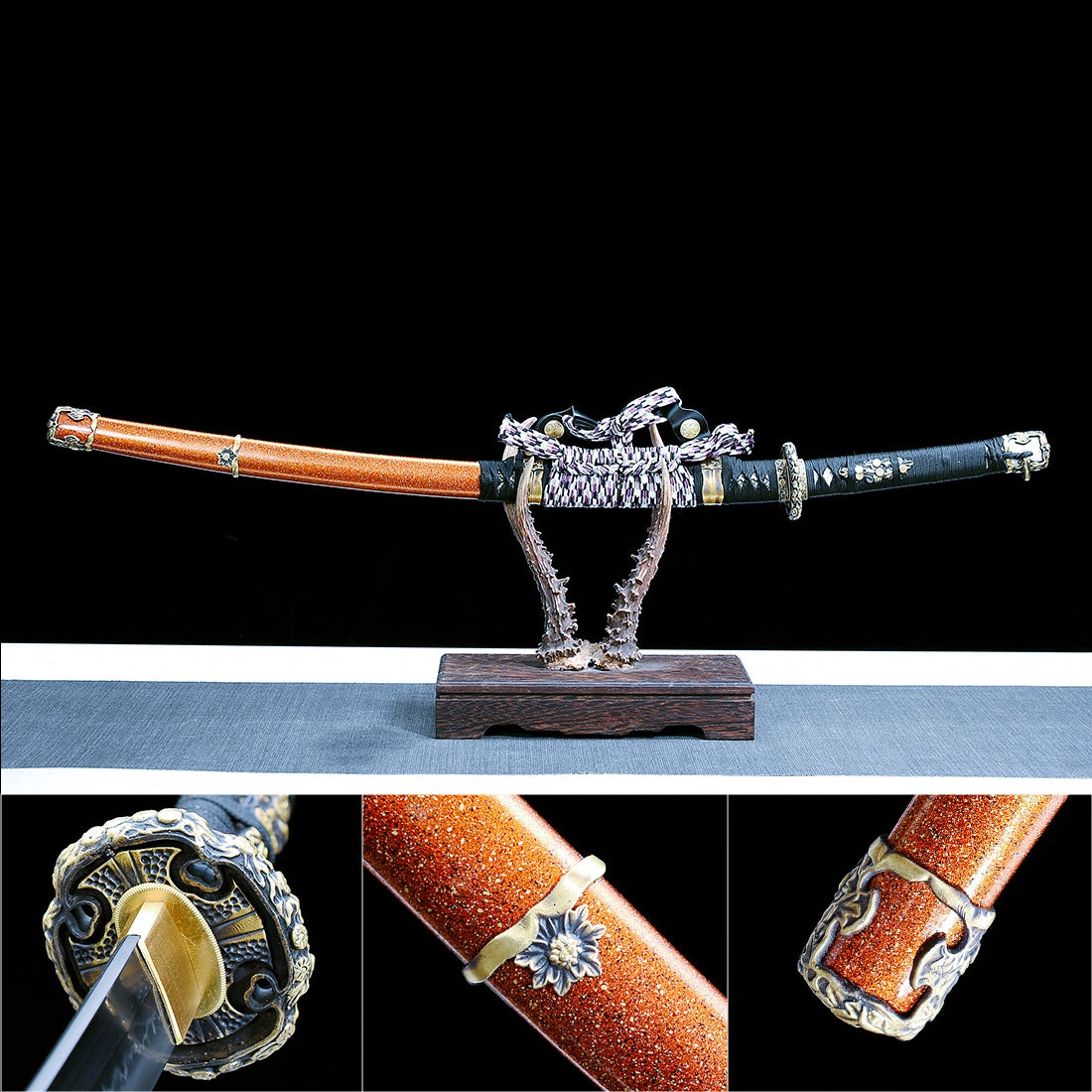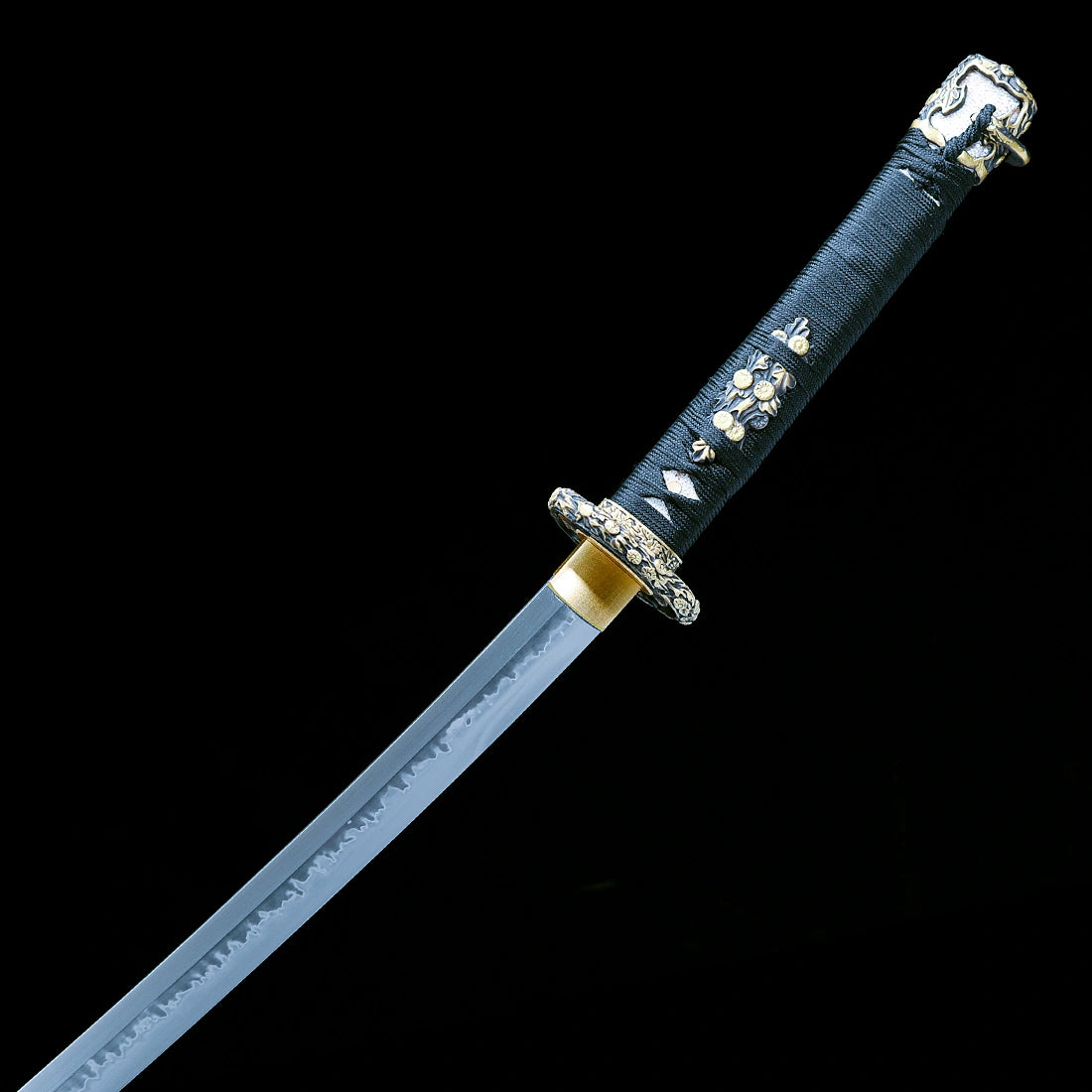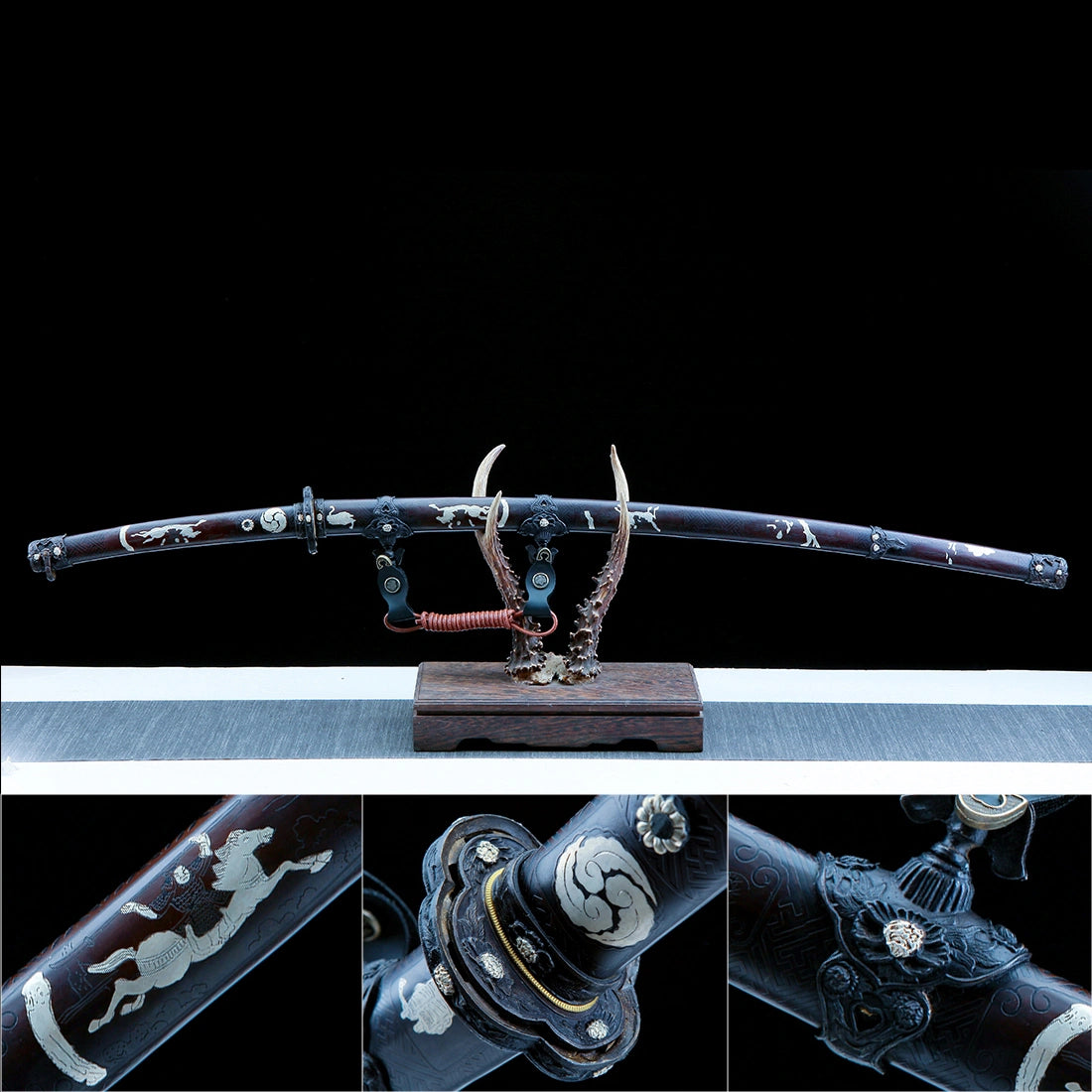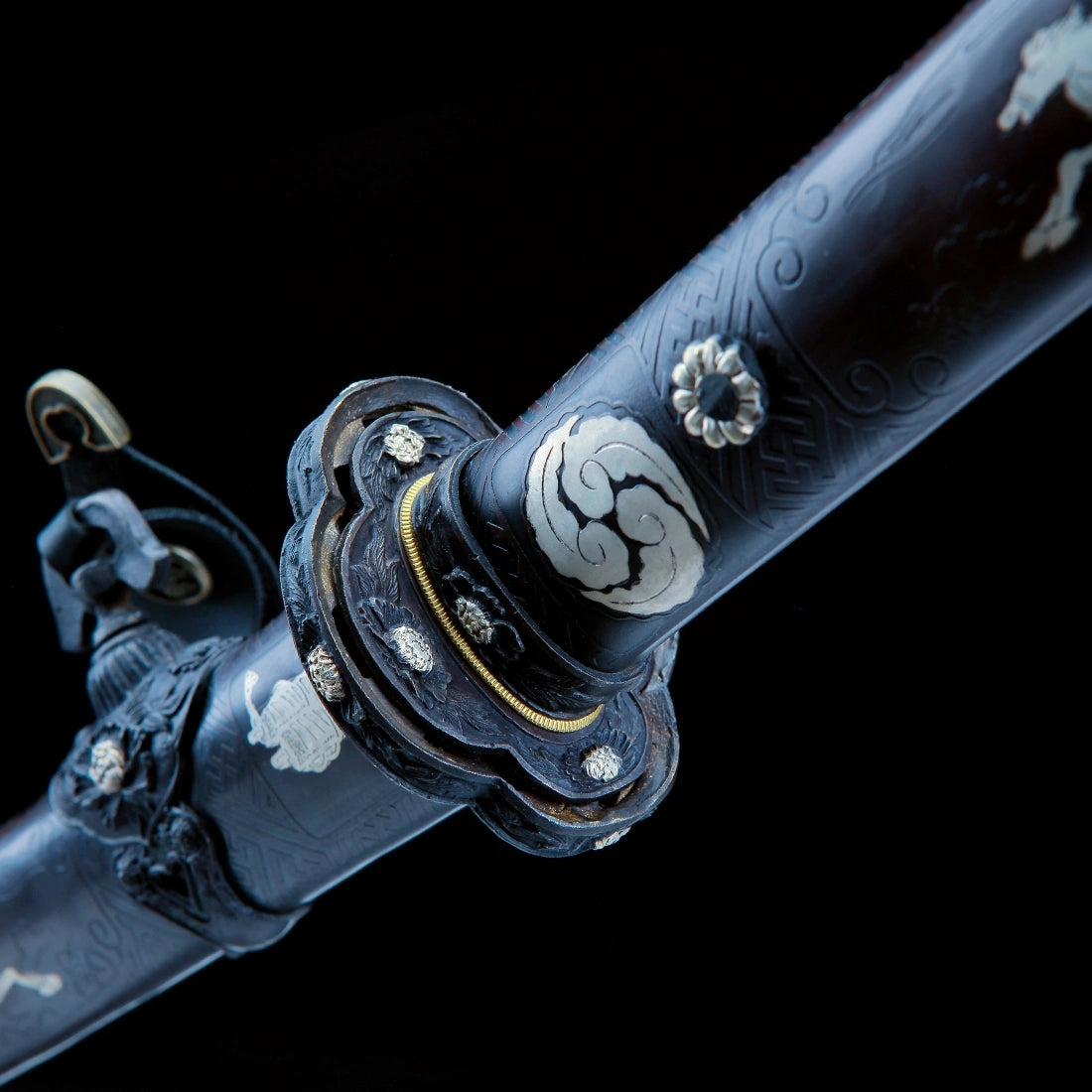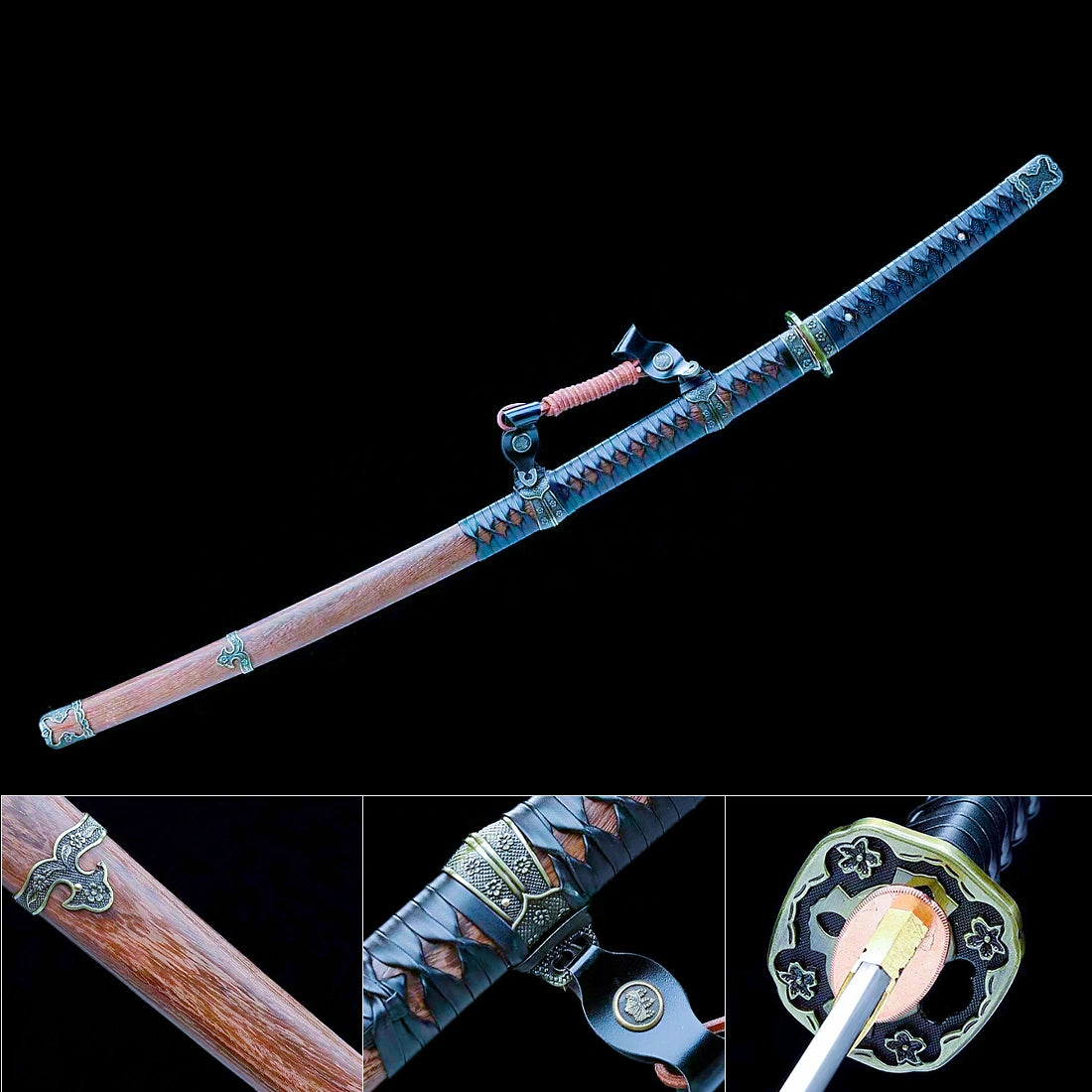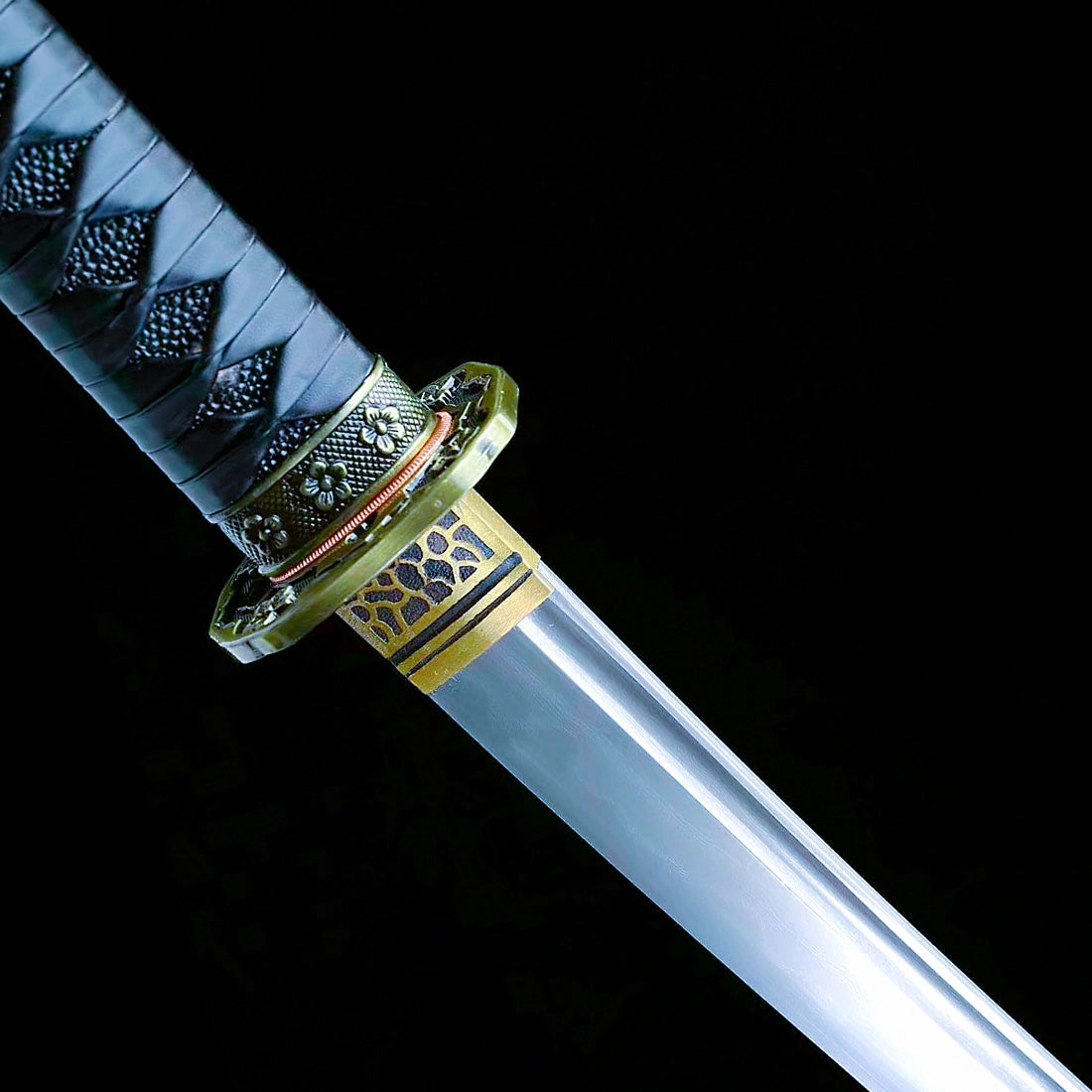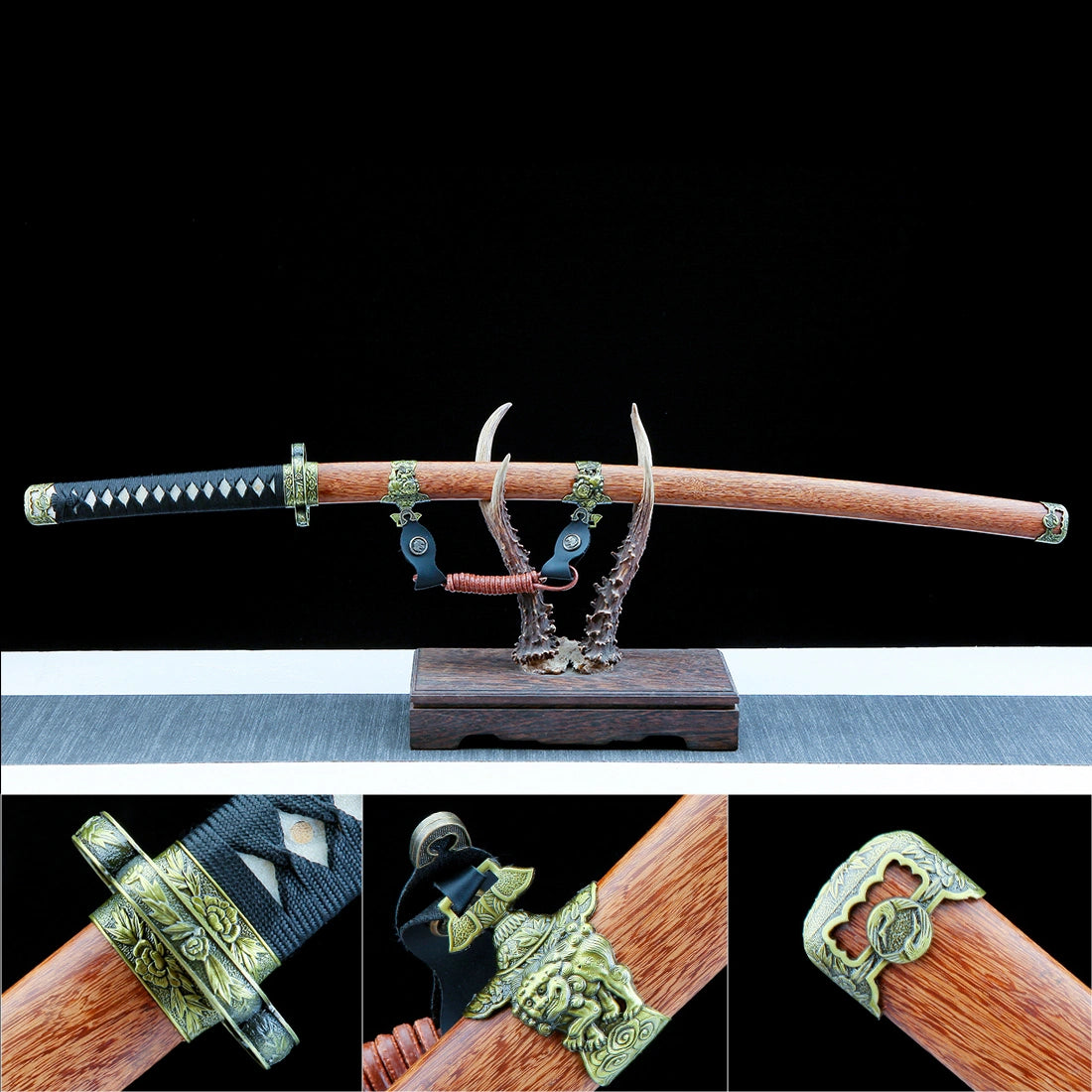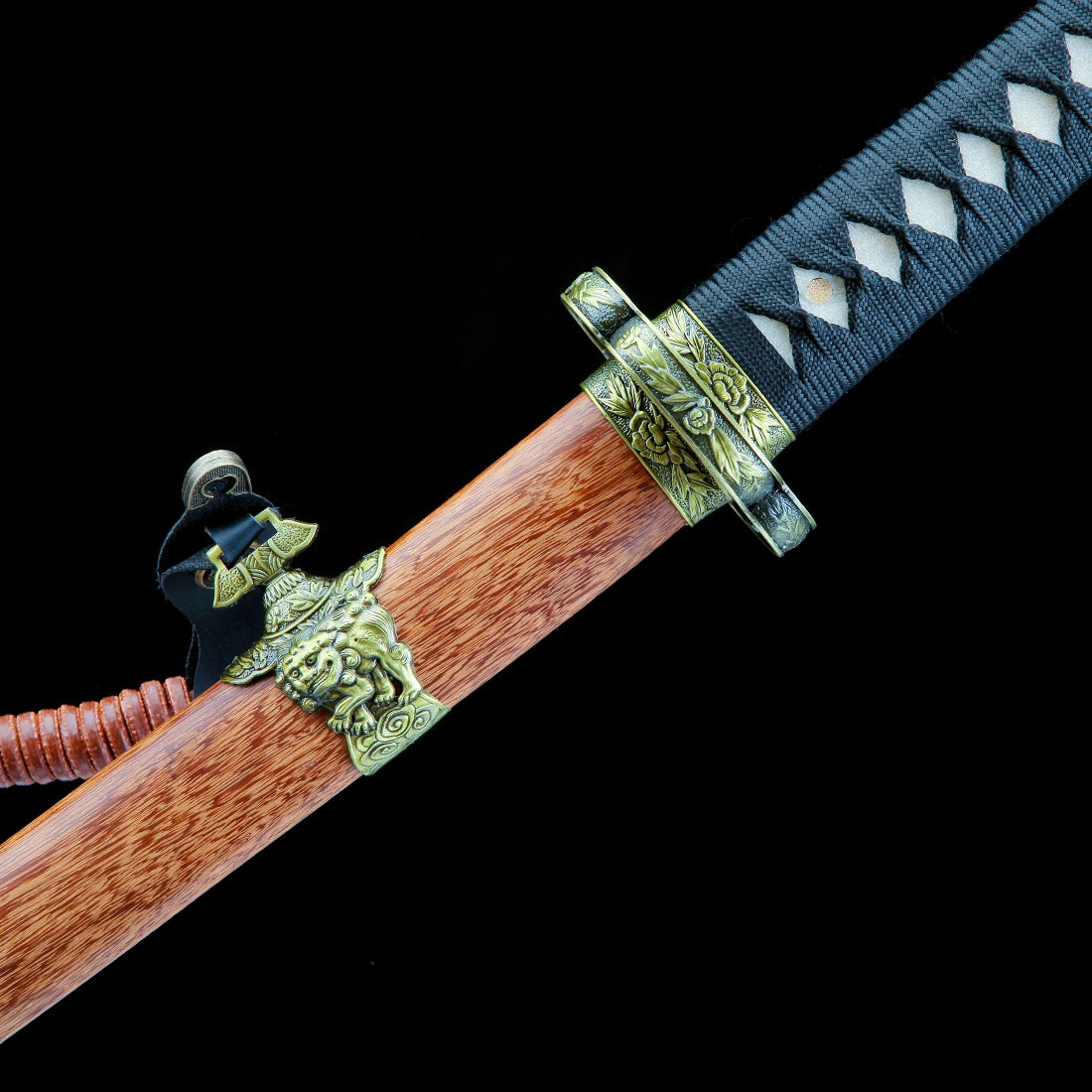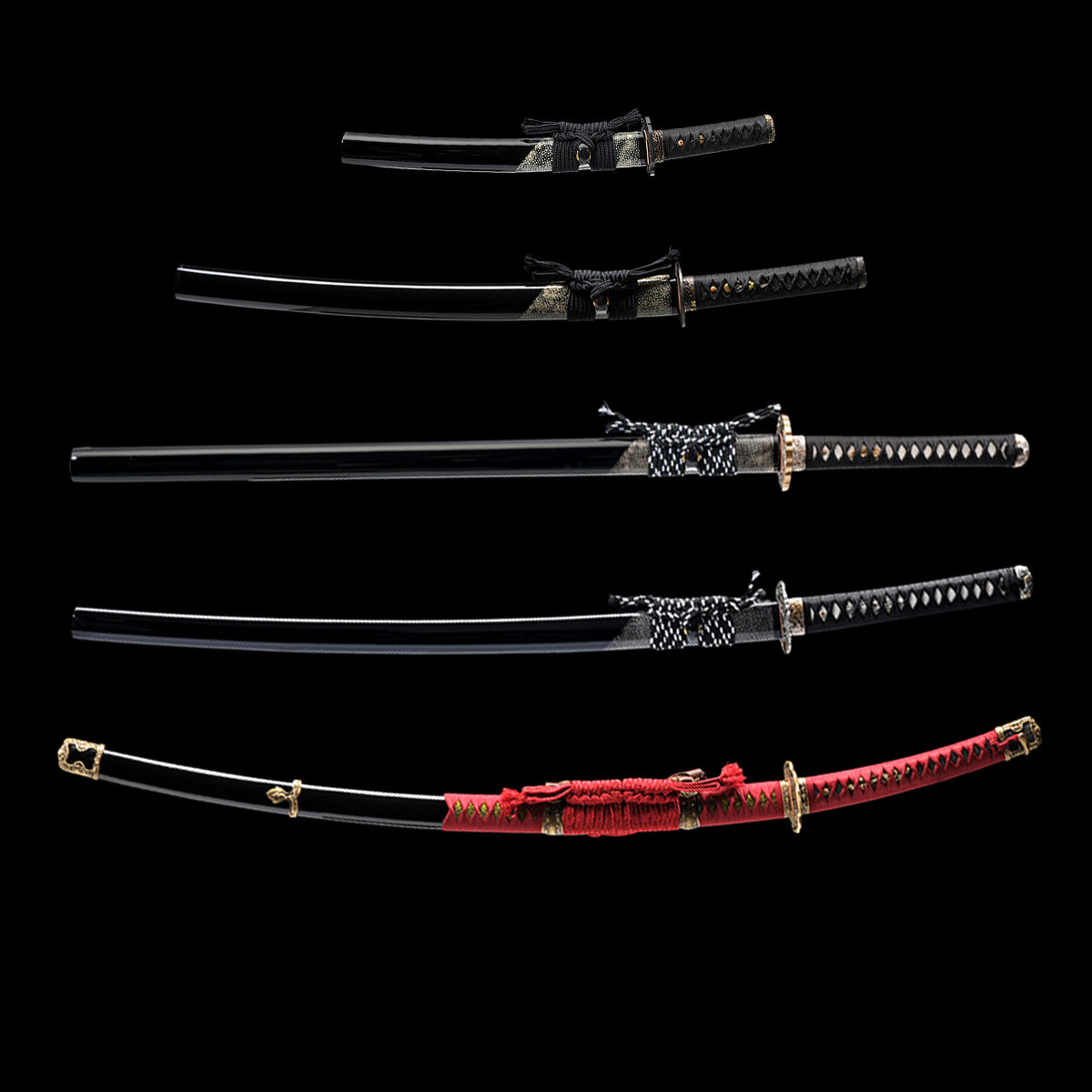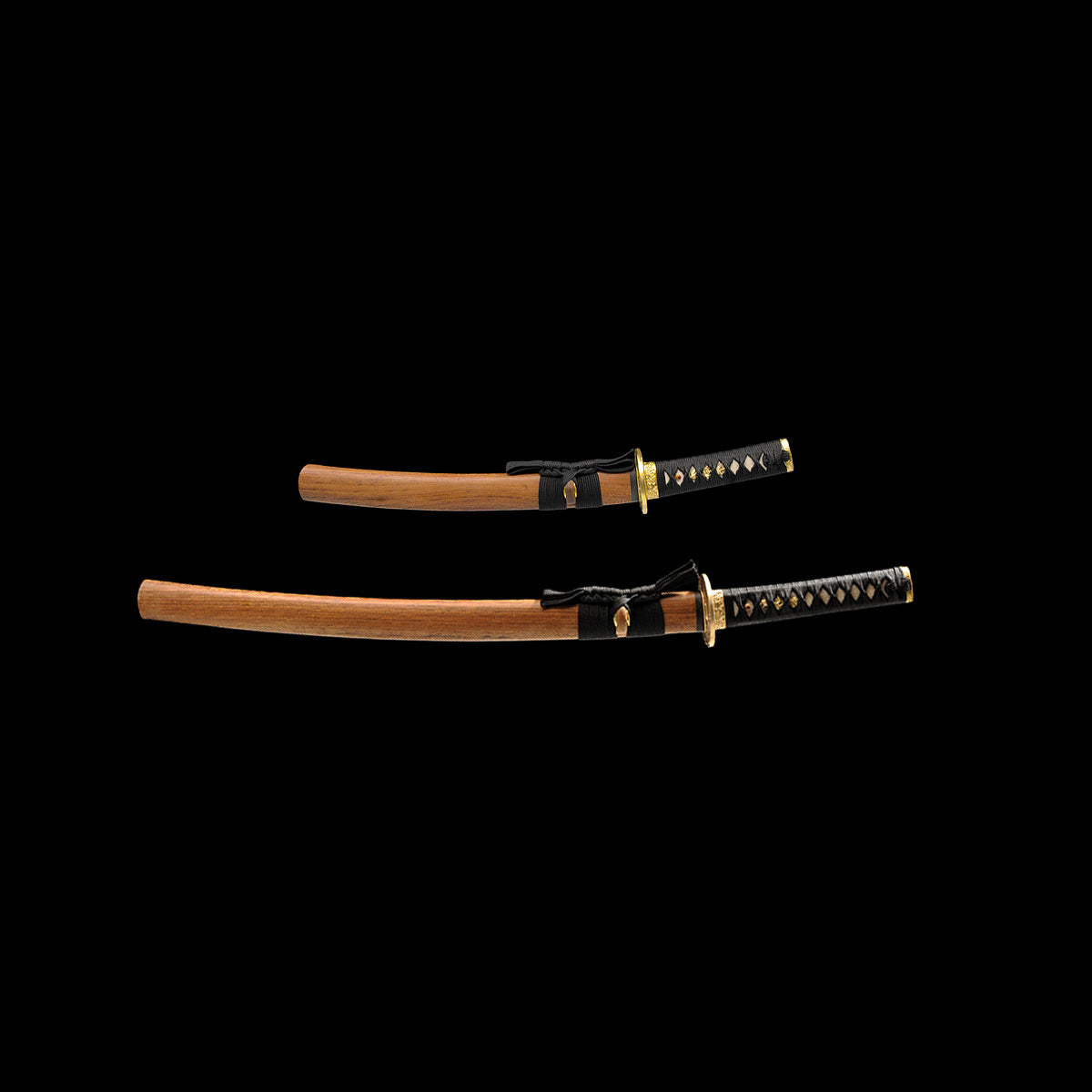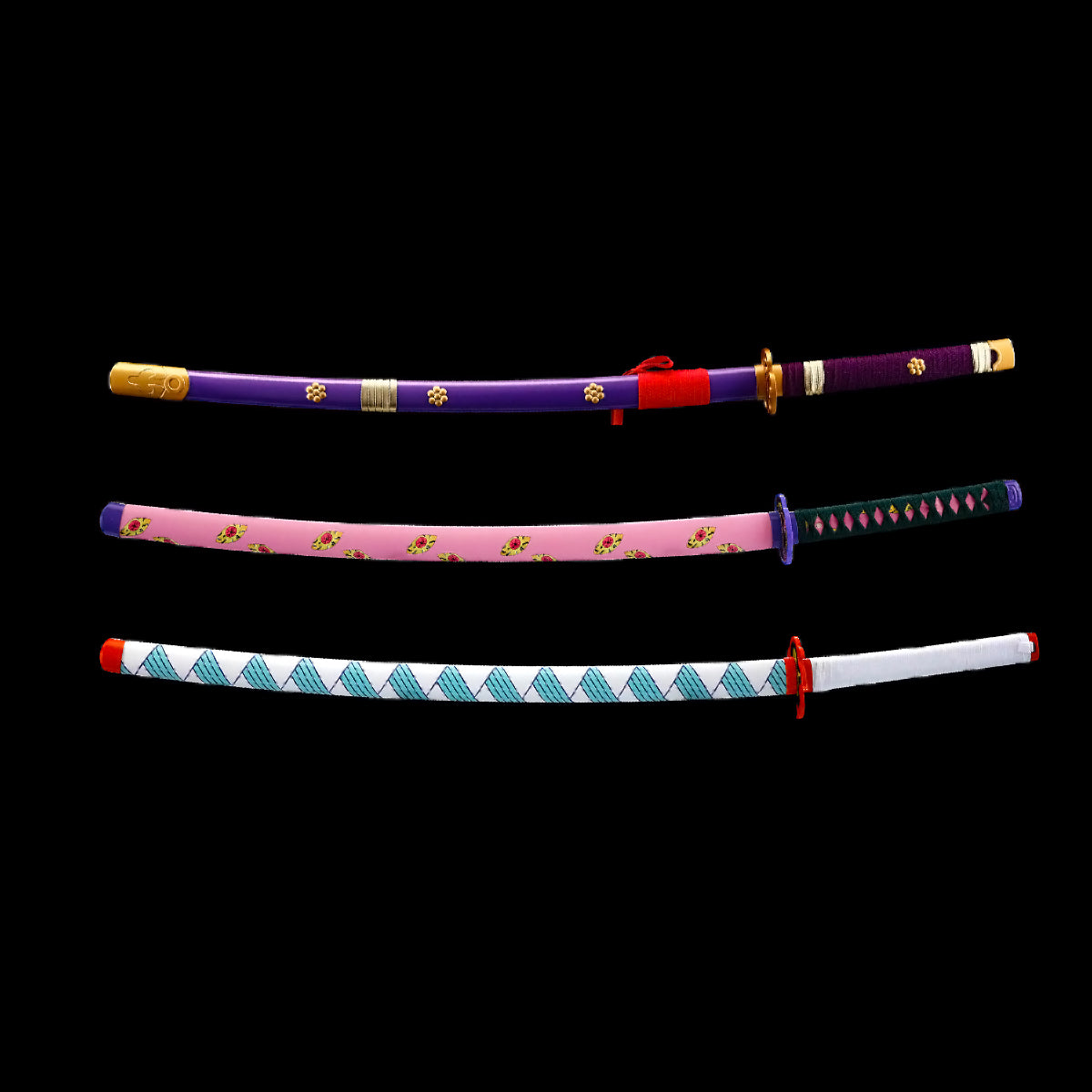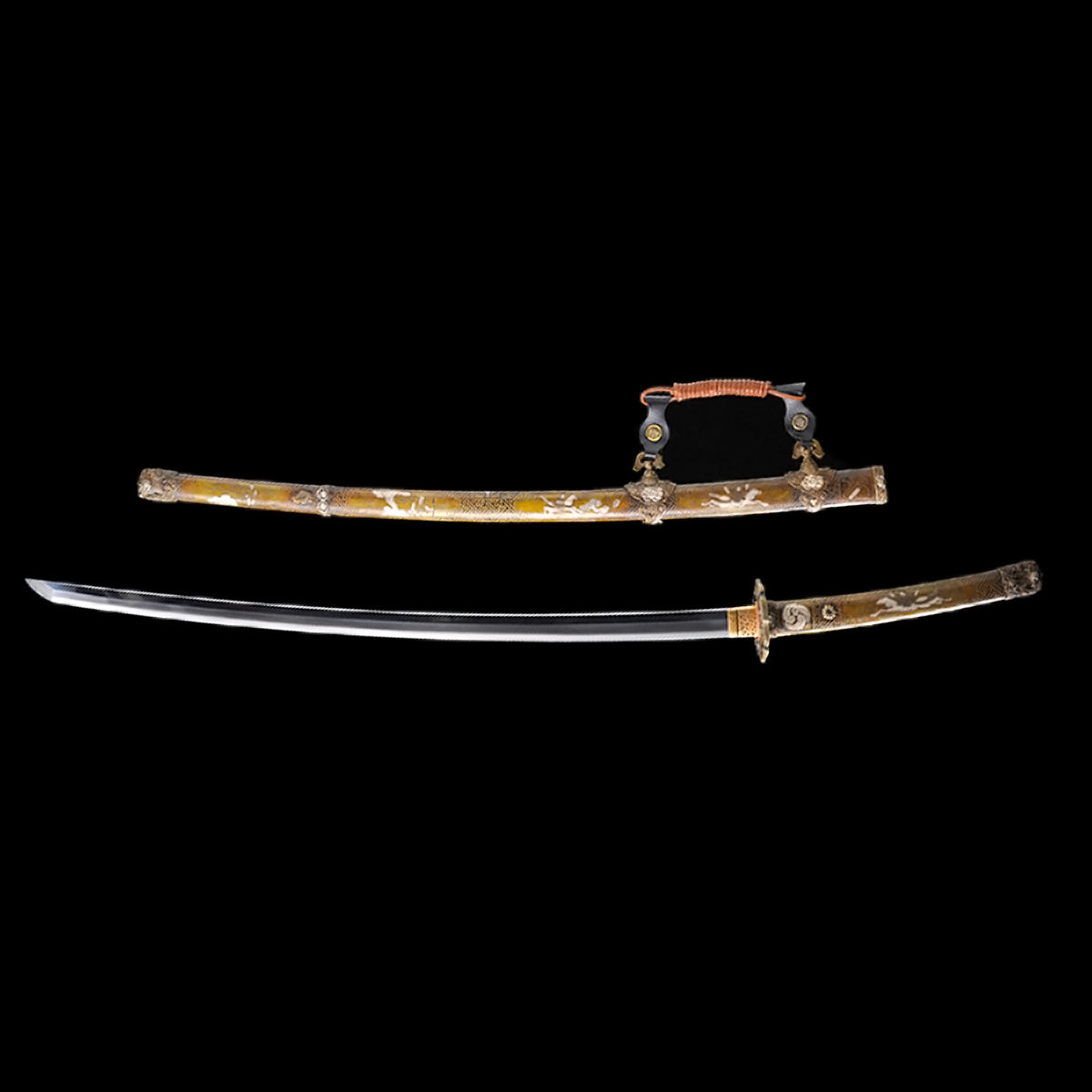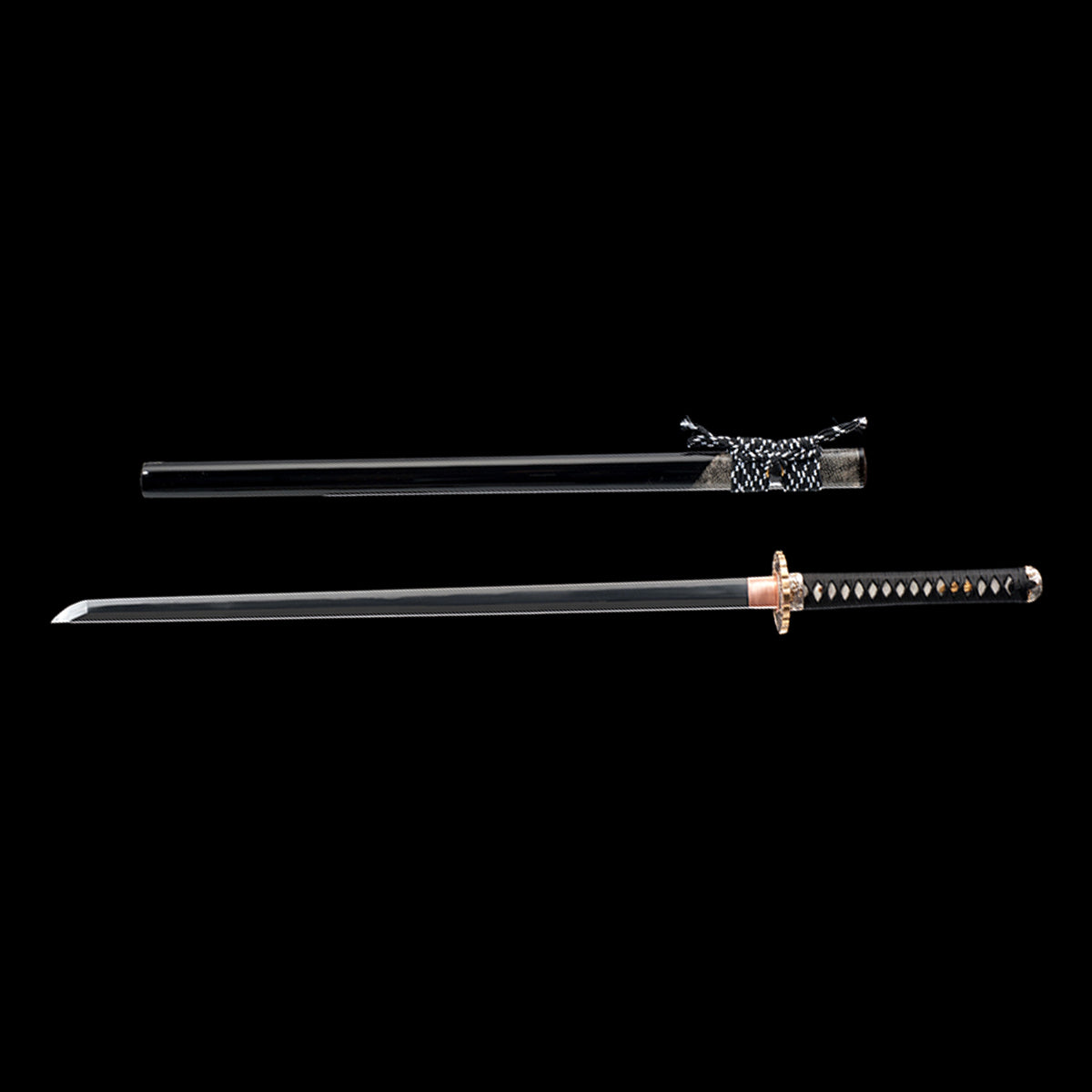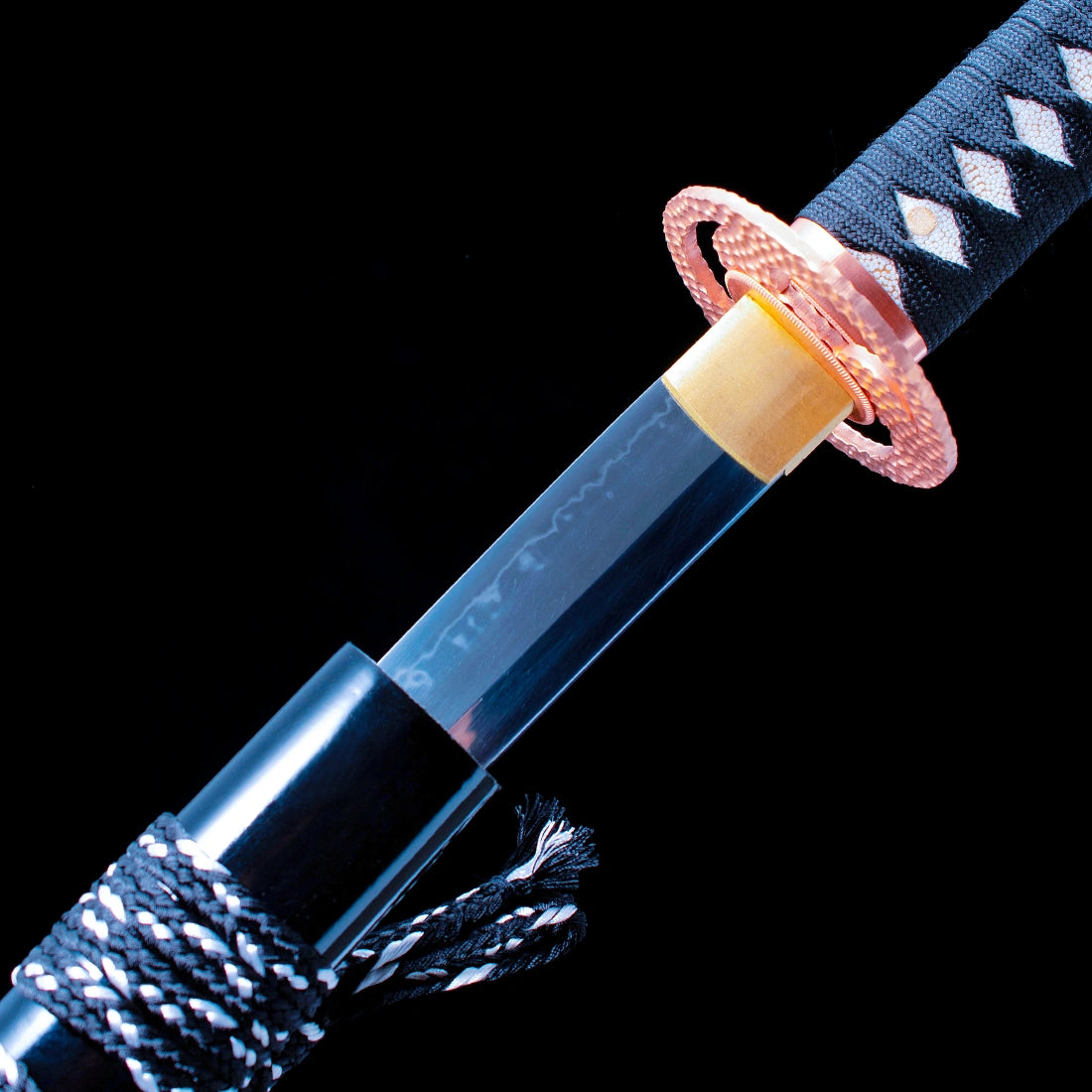FAQs
What does tachi mean?
What does tachi mean?
The Tachi (太刀): A Comprehensive Analysis of its Meaning, Form, and Historical Context
The term Tachi (太刀) is one of the most important and historically significant classifications in the study of Japanese swords. It does not simply mean "a long sword"; it refers to a specific type of long sword with a distinct method of wear, historical period, and aesthetic character that sets it apart from the more commonly known katana.
1. Etymology and Literal Meaning
The kanji for Tachi (太刀) can be broken down:
- 太 (Ta): Meaning "thick," "great," or "large."
- 刀 (Chi): Meaning "sword" or "blade." (The reading changes from "katana" to "chi" in this compound).
Thus, the term Tachi translates to "Great Sword" or "Long Sword." This name distinguishes it from shorter blades like the tantō (短刀) and references its primary use as a majestic weapon for mounted cavalry.
2. The Defining Characteristic: Method of Wear and Mounting
The single most important feature that defines a tachi is how it is worn. This is the crucial difference between a tachi and a katana.
- Tachi: Worn suspended from the obi (sash/belt) with the cutting edge facing downward.It was secured by cords (sageo) that attached to fittings on the scabbard (saya), which had often had special hangers (ashi).This method of suspension was ideal for a mounted warrior, as it allowed the sword to hang comfortably against the left side without interfering with the horse's movement. The edge-down orientation also facilitated a powerful downward draw and cut towards infantry on the ground.
- Katana (刀): In contrast, the later katana is worn thrust directly through the obi with the cutting edge facing upward.
This difference in wear is so fundamental that it is the primary criterion for classification, even overriding the blade's physical shape.
3. Historical Context: The Blade of the Classical Samurai
The tachi is the sword of the high-class, mounted samurai of Japan's classical eras.
- Period of Prominence: The tachi was the dominant long sword style from the Heian period (794-1185) through the Kamakura period (1185–1333), and into the Nanbokuchō period (1336–1392). This era is known as the Kotō (古刀, "Old Sword") period, representing the first golden age of Japanese sword smithing.
- Primary Use: It was the quintessential cavalry sword. Its design, wear, and curvature were all optimized for use on horseback. The samurai of this era were primarily horse-archers, and the tachi was their secondary weapon for close combat after discharging their arrows.
- Decline: As warfare shifted from cavalry-centric battles to large-scale infantry engagements during the Muromachi period (1336–1573), the need for a more quickly drawn weapon for foot soldiers arose. This led to the development and eventual dominance of the uchigatana (打刀), which evolved into the katana.
4. Physical and Aesthetic Characteristics
While the mounting style is key, tachi blades also developed distinct aesthetic traits that distinguish them from later katana.
- Curvature (Sori - 反り): Tachi typically exhibit a deeper, more pronounced curvature. The deepest point of the curve is often located in the lower half of the blade, closer to the tang. This is known as koshi-zori (腰反り, "waist curvature"). This shape was ideal for delivering powerful, drawing cuts from horseback.
- Length (Nagasa - 長さ): Tachi could be exceptionally long. During the Nanbokuchō period, a flamboyant style of very long and wide tachi (ōdachi / nodachi) became popular. However, standard tachi were still generally longer and more curved than the average Edo-period katana.
- Jihada and Hamon (地肌と刃文): As Kotō period blades, tachi are renowned for their exceptionally artistic and vibrant steel grain patterns (jihada) and temper lines (hamon). Smiths from schools like Yamato, Bizen, Sōshū, and Yamashiro produced blades with beautiful, active patterns containing nie (large martensite crystals), kinsuji (golden streaks), and chikei (curving lines).
- Signature (Mei - 銘): The smith's signature is traditionally carved on the outer side of the tang (nakago), which is the side that faces away from the body when the sword is worn suspended. This is the opposite of a katana, which is signed on the side that faces the body. This is a critical point for authentication and classification.
5. The Life of a Tachi: Suriage and Conversion
Many original tachi blades were later converted into katana during the Edo period. This process is known as suriage (磨上げ, "cutting down").
- Reason: As tastes and mounting styles changed, longer tachi blades were often shortened to be worn as katana.
- Process: The tang (nakago) was cut down, and the original peg hole (mekugi-ana) was removed. A new tang was shaped, and new holes were drilled.
- Consequence: This process often resulted in the loss of the original smith's signature (mei). Such blades are termed mumei (無名, "no signature") and must be attributed to a school or smith based on their stylistic features (sugata, jihada, hamon). A suriage blade is a testament to the blade's value and quality—it was worth modifying to keep in use.
Conclusion: The Definitive Meaning
The term Tachi (太刀) has three interconnected meanings:
- A Method of Wear: A long sword worn suspended from the belt with the cutting edge down.
- A Historical Blade Type: The dominant long sword of the Kotō ("Old Sword") period, representing the pinnacle of classical Japanese sword smithing, optimized for cavalry.
- An Aesthetic Ideal: A blade characterized by deep curvature, majestic proportions, and often exquisite artistic quality in its steel construction.
It is the precursor to the katana. While later superseded in everyday use by the more practical katana, the tachi remains revered as the grand, classical sword of Japan's ancient samurai nobility. To call a blade a tachi is to immediately place it within a specific historical, functional, and artistic context.
What is the difference between a tachi and a katana?
What is the difference between a tachi and a katana?
The Tachi and the Katana: A Comprehensive Professional Analysis
Within the taxonomy of Nihontō (日本刀), the tachi (太刀) and katana (刀) represent two distinct evolutionary stages of the Japanese long sword. They are not merely different styles but are products of different eras, combat doctrines, and social structures. The differences between them are systematic and profound, encompassing method of wear, historical context, aesthetic form, and functional purpose.
To classify a blade correctly, a connoisseur examines a hierarchy of characteristics, with the method of wear being the primary determinant.
1. The Foundational Difference: Method of Wear and Mounting
As the flowchart highlights, this is the single most important and defining distinction. It dictates every other aspect of the sword's design and use.
- Tachi (太刀): Worn suspended from the belt with the cutting edge facing downward.The scabbard (saya) has fittings (ashi) that allow cords (sageo) to secure it to the belt, allowing it to hang freely.This method was ideal for a mounted warrior (bajō hei), as it prevented the sword from interfering with the horse's movement and allowed for a smooth, downward draw to strike at foot soldiers.
- Katana (刀): Worn thrust through the obi (sash) with the cutting edge facing upward.This style is specifically called uchigatana (打刀, "striking sword").This method was optimized for foot soldiers (ashigaru) and dueling. The edge-up position allowed for an extremely rapid, simultaneous draw and cut motion (iaijutsu), which was crucial for close-quarters infantry combat and surprise encounters.
2. Historical Context and Period of Dominance
The shift from tachi to katana was a direct response to changes in warfare and society.
- Tachi: The Sword of the Classical SamuraiEra: The tachi was the dominant form during the Kotō (古刀, "Old Sword") period, circa 900-1596. This encompasses the Heian (794-1185), Kamakura (1185–1333), and Nanbokuchō (1336–1392) periods.Context: This was the age of the mounted samurai warrior, who was primarily a horse-archer. The tachi was his secondary weapon, used after expending his arrows. Warfare was often a series of arranged skirmishes and cavalry charges.
- Katana: The Sword of the Common Foot Soldier and DuelistEra: The katana rose to prominence during the Muromachi period (1336–1573), specifically the turbulent Sengoku Jidai (Warring States period, 1467-1590), and became the standard thereafter (Shintō period, 1596-1780).Context: Constant civil war led to large-scale infantry battles. Quick mobilization required arming common foot soldiers (ashigaru) effectively. The katana was cheaper to produce in quantity and its drawing technique was easier to teach to conscripts. Its use continued into the peaceful Edo period, where it became a dueling weapon and status symbol.
3. Physical and Aesthetic Characteristics
The different functions and periods of manufacture led to distinct aesthetic qualities.
- Curvature (Sori - 反り):Tachi: Typically has a deeper, more pronounced curvature. The deepest point of the curve is often in the center or lower half of the blade, closer to the tang (nakago). This is known as koshi-zori (腰反り, "waist curvature"). This shape maximizes the effect of a downward cutting motion from horseback.Katana: Generally has a shallower curvature. The deepest point of the curve often moves towards the center or even the tip (saki-zori). This facilitates the quick, upward draw and cut of iaijutsu.
- Length and Proportion:Tachi: Often longer on average, with some periods (like the Nanbokuchō) favoring extremely long and grandiose blades (ōdachi).Katana: While still a long sword (daitō), its proportions became more standardized and utilitarian during the Edo period.
- Artistic Quality:Tachi: As Kotō blades, they are renowned for their vibrant and artistic steel structures. The jihada (grain pattern) and hamon (temper line) often feature dramatic activities like chikei (lightning-like streaks), kinsuji (golden streaks), and bright nie (crystals). They are considered the pinnacle of artistic sword smithing.Katana: Shintō period blades are often characterized by more subdued, controlled, and sometimes more flamboyant but less "organic" hamon. The focus shifted slightly from individual artistry towards reliability and mass production for a large class of warriors.
- Signature (Mei - 銘):Tachi: The smith's signature is carved on the side of the tang that is deemed the outward-facing side (omote) when the sword is worn suspended. For a tachi, this is typically the side that would face away from the body.Katana: The signature is carved on the side of the tang that is deemed the body-facing side (ura) when the sword is worn thrust through the obi. This is a critical rule for authentication.
4. The Phenomenon of Suriage (磨上 - "Cutting Down")
Many original tachi blades were later converted into katana during the Edo period. This process is known as suriage.
- Reason: As mounting styles changed and longer blades became less practical for peacetime wear, valuable old tachi blades were shortened to be re-mounted in uchigatana (katana) style.
- Process: The tang (nakago) was significantly cut down, and the original peg hole (mekugi-ana) was removed. A new tang was shaped, and new holes were drilled.
- Consequence: This process often resulted in the loss of the original smith's signature (mei). Such blades are termed mumei (無名, "no signature") and must be attributed to a school or smith based on their remaining stylistic features (sugata, jihada, hamon). The presence of a suriage shortening is a key diagnostic feature that a blade began its life as a tachi.
In essence, the tachi is the grand, classical sword of the mounted nobleman, designed for the warfare of the open field. The katana is the pragmatic weapon of the foot soldier and the duelist, designed for the battlefields of mass infantry and the streets of peacetime Japan. They are both masterpieces of their respective eras, but their differences tell the story of a evolving society and its methods of war.
Why did samurai stop using tachi?
Why did samurai stop using tachi?
The Obsolescence of the Tachi: A Historical and Tactical Analysis
The displacement of the tachi (太刀) as the primary long sword of the samurai was not a sudden event but a gradual process driven by profound changes in warfare, society, and technology. The shift from the suspended, edge-down tachi to the thrust-through-the-obi, edge-up katana (刀) or uchigatana (打刀) was a pragmatic response to new combat realities, culminating in the peaceful Edo period where the tachi's very reason for existence vanished.
1. The Primary Driver: The Revolution in Warfare (14th - 16th Centuries)
The single most important factor was the fundamental change in the nature of Japanese warfare, particularly during the Sengoku Jidai (Warring States period, 1467-1590).
- From Cavalry Skirmishes to Mass Infantry Battles:Tachi Era (Heian - Kamakura): Early samurai warfare was dominated by highly ritualized combat between elite, horse-riding warriors (bajō hei). The tachi was perfect for this: its suspended, edge-down wear allowed for a powerful downward draw and cut from horseback against foot soldiers or other cavalry.Sengoku Jidai: Constant, large-scale civil war changed everything. Armies grew massive, consisting primarily of common foot soldiers (ashigaru). Battles were no longer about individual heroics but about large formations of infantry. The mounted samurai became a tactical officer class, often fighting on foot to lead these formations.
- The Need for a New Sword for Foot Combat:On the crowded, chaotic battlefield, combat was up-close and personal. The key to survival was drawing one's weapon and engaging the enemy as quickly as possible.The tachi was poorly suited for this. The motion of drawing a suspended sword is slower and more telegraphic than the iaijutsu (quick-draw) technique used with a blade worn edge-up.The uchigatana/katana, thrust through the obi with the edge facing up, could be drawn and cut in a single, lightning-fast motion. This was a decisive tactical advantage for an infantryman who might be suddenly ambushed or need to quickly exploit an opening.
2. The Rise of the Ashigaru and Mass Production
- Arming the Common Soldier: The uchigatana was simpler, more robust, and crucially, cheaper and faster to produce than the often ornate and complex tachi. This allowed daimyō (feudal lords) to equip their vast armies of ashigaru with effective sidearms.
- A Shift in Aesthetics: While master smiths still produced artistic swords, the market was flooded with utilitarian, mass-produced blades (kazuuchimono - 数打ち物) that prioritized function and affordability over the artistic perfection of the Kotō (Old Sword) tachi.
3. The Final Blow: The Pax Tokugawa and the Codification of the Katana
The establishment of the Tokugawa shogunate (1603-1868) and the imposition of nationwide peace (Pax Tokugawa) completely removed the tachi's raison d'être.
- The End of Battlefield Warfare: With no large-scale battles, the specific tactical advantages of any battlefield sword became irrelevant. The samurai's role shifted from warrior to bureaucrat, peacekeeper, and duelist.
- The Dominance of the Duel and Self-Defense: In peacetime, the most likely combat scenario was a sudden street duel, ambush, or self-defense situation. The katana's quick-draw capability was perfectly tailored for these encounters. Schools of swordsmanship (kenjutsu, iaijutsu) formalized around the use of the edge-up katana.
- The Daishō as a Status Symbol: The Tokugawa shogunate's laws (Buke Shohatto) codified the wearing of the paired long and short swords (daishō) as the exclusive right of the samurai class. The long sword in this pair was, by this time, universally the katana. The tachi was no longer part of this defining social custom. It became an obsolete relic of a bygone era.
4. The Fate of Existing Tachi: Suriage (磨上 - "Cutting Down")
The samurai did not simply throw away their old tachi. Many were converted for continued use in the new fashion. This process is known as suriage.
- Process: The long tang (nakago) of the tachi was significantly shortened. The original signature (mei) was often lost in this process. The blade was then re-mounted in a katana mounting (koshirae) designed to be worn thrust through the obi.
- Significance: The fact that so many tachi were altered in this way is powerful evidence of the complete and total shift in wearing style. A suriage blade is a physical testament to this historical transition.
Synthesis: Why the Tachi Disappeared
The tachi became obsolete because the world it was designed for ceased to exist.
- Tactical Obsolescence: Its design was optimized for mounted combat, which was superseded by mass infantry warfare. The katana was simply better suited for the new style of fighting.
- Social and Legal Obsolescence: In the peaceful Edo period, the katana became enshrined in law and custom as the symbol of the samurai. The tachi had no place in this new social order.
- Functional Obsolescence: For the new duties of a samurai—dueling, self-defense, and civilian wear—the katana's quick-draw capability and convenient method of carry were overwhelmingly superior.
The tachi did not vanish due to inferior quality. In fact, the greatest artistic masterpieces of the sword smith's craft are often tachi from the Kamakura period. It vanished because it was a specialized tool for a specific type of warfare that itself vanished. The samurai abandoned the tachi not for a better sword in an absolute sense, but for a better sword for the world they now lived in. The katana was the sword of the common foot soldier that evolved to become the soul of the peacetime samurai bureaucracy.
What is the opposite of tachi?
What is the opposite of tachi?
The Mechanics of the Draw: A Deep Dive into Tachi vs. Katana Carry
The orientation of the blade—edge-down for the tachi and edge-up for the katana—is the single most important diagnostic feature distinguishing these two types of long swords, and this difference is a direct result of their intended combat environments.
1. The Tachi: Optimized for Mounted Combat (騎馬戦 - Kibasen)
The tachi was the primary armament of the early samurai, who were first and foremost horse-archers. Its entire design philosophy revolves around use from the saddle.
- The Physics of the Suspended Draw:When suspended from the belt or armor cords, the tachi hangs with the curve (sori) following the contour of the wearer's hip and thigh. The hilt (tsuka) is positioned slightly forward.To draw, the samurai would stabilize the scabbard (saya) with their left hand and use their right hand to execute a wide, downward arc. The blade's own weight and curvature would assist in this motion.The Cutting Motion: This downward draw flowed seamlessly into a powerful, sweeping downward cut. This was ideal for striking infantry soldiers from the elevated position of a horse's back. The primary targets were the shoulders, head, or arms of an opponent on the ground.
- The Role of the Curve (Sori - 反り):The tachi typically possesses a deeper curvature, often in the lower half of the blade (koshi-zori). This shape is not merely aesthetic; it maximizes the effectiveness of this downward drawing cut. The curve concentrates the force of the impact into a smaller area, increasing cutting efficiency and reducing the chance of the blade becoming stuck in a target.
- Practicality on Horseback:A sword worn thrust through the obi (like a katana) would be uncomfortable and impractical for riding, jabbing into the rider's thigh and interfering with the horse's movement. The suspended tachi hung freely, clear of the saddle and the rider's legs.
2. The Katana (Uchigatana): Optimized for Foot Combat (歩兵戦 - Hoheisen)
The rise of the katana (specifically, its precursor, the uchigatana or "striking sword") is linked to the shift from cavalry-centric warfare to large-scale infantry battles during the Muromachi period's Sengoku Jidai (Warring States period).
- The Physics of the Iaijutsu Draw:With the blade worn edge-up and thrust directly through the obi, the hilt is canted forward, placing the grip within perfect reach of the right hand.The drawing motion is a lightning-fast, singular action: the samurai would slightly loosen the scabbard with the left hand ("koiguchi o kiru" - to break the scabbard's mouth) while the right hand pushes the guard (tsuba) slightly down and away. The sword is then drawn upward and across the body in a single, continuous motion that is itself a cutting stroke.This technique, formalized as iaijutsu (居合術) and later iaidō (居合道), is designed to respond to a sudden attack or threat at close quarters, such as in a street ambush or inside a building.
- Advantages for the Foot Soldier:Speed: This draw is significantly faster from a standing or walking position than the suspended draw of the tachi.Efficiency: The motion of drawing and cutting are combined into one, saving a critical fraction of a second in a life-or-death situation.Close Quarters: The shorter overall length of the average katana (compared to a tachi) and this drawing style made it far more effective in confined spaces, inside buildings, or in dense infantry formations where swinging a long sword was impossible.
- The Evolution of the Curve:As the drawing technique changed, so did the blade's curvature. Katana often exhibit a shallower curve, sometimes positioned closer to the tip (saki-zori), which further facilitates the smooth, upward-slicing motion of the iaijutsu draw.
Synthesis: A Response to Changing Warfare
The shift from tachi to katana is a story of technological adaptation:
- Tachi Era: Warfare was dominated by high-ranking, mounted samurai. Combat was often a series of controlled skirmishes and cavalry charges. The tachi was the perfect tool for this vertical battlefield, where a samurai struck down from an elevated position.
- Katana Era: The Sengoku Jidai involved massive armies of foot soldiers (ashigaru). Battles were chaotic melees fought on foot. The uchigatana/katana was the perfect tool for this horizontal battlefield, where speed, reactivity, and effectiveness in close-packed crowds determined survival.
Conclusion
Your initial statement perfectly captures the core of the distinction. The opposing blade orientations are not arbitrary; they are the result of centuries of martial evolution, refining the sword's form to perfectly suit its function. The tachi's edge-down carry is an ergonomic masterpiece for the mounted warrior, while the katana's edge-up carry is a biomechanical triumph for the foot soldier and duelist. This single, critical difference in wear defines everything about how these two iconic swords were used and why one eventually replaced the other as the samurai's primary sidearm.

